And Get a Free Panel Clean!
And Get a Free Panel Clean!
5

Unless you have solar batteries you are facing serious increases in energy costs. 888 Solar Tek have installed hundreds of solar battery systems in the Northern Rivers in the last 8 years. If you have existing solar panels we can easily retrofit solar batteries to store your power for overnight use. Why buy more expensive electricity when you can use more of your
Unless you have solar batteries you are facing serious increases in energy costs. 888 Solar Tek have installed hundreds of solar battery systems in the Northern Rivers in the last 8 years. If you have existing solar panels we can easily retrofit solar batteries to store your power for overnight use. Why buy more expensive electricity when you can use more of your free solar power?
Do you have solar panels yet find your bill is now twice as much as it was last year? The electricity market is broken and retailers have attacked solar users with a double whammy - Slash the amount they pay for your solar energy and increase all the other charges. More pain is on the wayanother 20% increase in power prices this year. Call Vincent now to get a free on-site consultation.
Unless you have solar batteries you are facing serious increases in energy costs. 888 Solar Tek have installed hundreds of solar battery systems in the Northern Rivers in the last 8 years. If you have existing solar panels we can easily retrofit solar batteries to store your power for overnight use. Why buy more expensive electricity when you can use more of your free solar power?
Unless you have solar batteries you are facing serious increases in energy









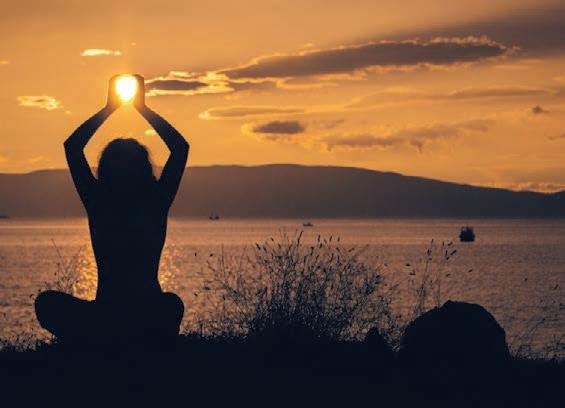





Do you have solar panels yet find your bill is now twice as much as it was last year? The electricity market is broken and retailers have attacked solar users with a double whammy - Slash the amount they pay for your solar energy and increase all the other charges. More pain is on the wayanother 20% increase in power prices this year. Call Vincent now to get a free on-site consultation.
free
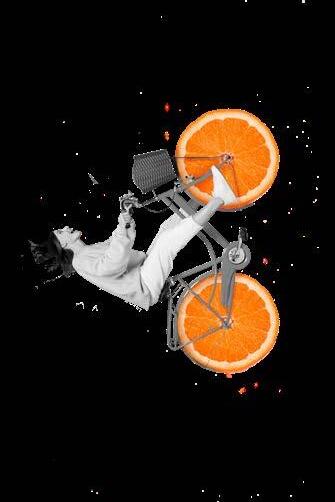

$7,888
$7,888
Add



5.4 kWh battery for $4,000 more.
Add another 5.4 kWh battery for $4,000 more.
Add another 5.4 kWh battery for $4,000 more.






www.echo.net.au May 31, 2023 The Byron Shire Echo 21 Ph 02 6688 4480 The Best Technology in Solar Power, Off Grid, Residential & Business Call Vincent Selleck for a Free Consultation Lic.No. 334826C www.888solartek.com.au
to Any Existing Solar System
kW
Inverter
Special! - Add Batteries
5
Hybrid G2
with 5.4 kWh Lynx Lithium Battery fully installed from
Test Drive a Nissan Leaf EV! We have 24, 30 & 40 kWh cars at half the new price. New Off Grid Technology Provides Cheaper, Better Solar Power Than Ever Before Ph 02 6688 4480 The Best Technology in Solar Power, Off Grid, Residential & Business Call Vincent Selleck for a Free Consultation Lic.No. 334826C www.888solartek.com.au
another
Batteries to Any Existing Solar System
Special! - Add
kW
G2 Inverter
Hybrid
with 5.4 kWh Lynx Lithium Battery fully installed from $7,888
Leaf EV! We have 24, 30 & 40 kWh cars new price. New Off Grid Technology Provides Cheaper, Better Solar Power Than Ever Before Ph 02 6688 4480 The Best Technology in Solar Power, Off Grid, Residential & Business Call Vincent Selleck for a Free Consultation Lic.No. 334826C www.888solartek.com.au Capture the Sun! With paybacks as low as 5 years, solar batteries are essential for lower bills and freedom from price rises and blackouts. And a Free Panel Clean!
costs. 888 Solar Tek have installed hundreds of solar battery systems in the Northern Rivers in the last 8 years. If you have existing solar panels we can easily retrofit solar batteries to store your power for overnight use. Why buy more expensive electricity when you can use more of your free solar power? Do have panels yet find twice as much as it The electricity market is broken and retailers have attacked solar users with a double whammy - Slash the amount they pay for your solar energy and increase all the other charges. More pain is on the wayanother 20% increase in power prices this year. Call Vincent now to get a
Special! Add Batteries to Any Existing Solar System Solar Batteries
on-site consultation.
5 kW Hybrid G2 Inverter with 5.4 kWh Lynx Lithium Battery fully installed from
Test Drive a Nissan Leaf EV! We have 24, 30 & 40 kWh cars at half the new price. New Off Grid Technology Provides Cheaper, Better Solar Power Than Ever Before Ph 02 6688 The Best Technology in Solar Power, Off Grid, Residential & Business Call Vincent Selleck for a Free Consultation Lic.No. 334826C www.888solartek.com.au
FREEDOM Capture the Sun!
SOLAR
and blackouts. with
a
With paybacks as low as 5 years, solar batteries are essential for lower bills and freedom from price rises
And Get
Free Panel Clean!
free solar power? Do you have solar panels yet find your bill is now twice as much as it was last year? The electricity market is broken and retailers have attacked solar users with a double whammy - Slash the amount they pay for your solar energy and increase all the other charges. More pain is on the wayanother 20% increase in power prices this year. Call Vincent now to get a free on-site consultation. Special! - Add Batteries to Any Existing Solar Solar Batteries 5 kW Hybrid G2 Inverter with 5.4 kWh Lynx Lithium Battery fully installed from $7,888 Add another 5.4 for $4,000 Test Drive a Nissan Leaf EV! We have 24, 30 & 40 kWh cars at half the new price. New Off Grid Technology Provides Cheaper, Better Solar Power Than Ever Before www.echo.net.au/sustainability PULL THIS SECTION OUT! Hints for living a sustainable life Vol 15, Winter 2023
Your choices will change the world
Aslan Shand
www.echo.net.au/sustainability

Editor: Aslan Shand
Contributors: Aletha Zylstra, Rebecca Whan, Adel Pheloung, Mandy Nolan, David Lowe, David Lisle, Eve Jeffery, Jo Immig, Dr Willow Hallgren, Belle Budden, Charles Boyle, Miica Balint

Advertising team: Crystal Appo, Kim Beaver, Anna Coelho, Jacki Coward, Cassie Douglas, Lesley Hannaford, Kate Messenger, Katie Thompson

Design & production: Tirza Abb, Ziggi Browning
Tirza Abb
• 6684 1777
The time is now. That is the message that is being delivered to individuals, investors, companies and governments alike. The question is – what are people going to do? Because it is important to remember that investors, companies and governments are made up of people, it is people who make the decisions about how these entities act, on behalf of owners, and how governments act on behalf of voters.
So even if you feel like a tiny speck in an endless ocean of people, remember that each one of us has the power to influence the world around us every day with the decisions we make in our own lives, in our work lives, in our voting.
Throughout this Sustainability issue we have looked at a range of the challenges and opportunities that face us and how we might be able to react. How our representatives in government might be able to react, and how we might change the world. Because, quite frankly, that’s exactly what we need to do; change the world through how we interact with it and what we expect from it.
There are all sorts of possibilities, from just not getting in that fossil fuelled vehicle to go around the corner, to how you invest your money, to the products you choose to buy and the expectations you have of the government. Not everyone is in the position to lie down on a railway line, hoist themself up a tree or
stick themself to the pavement in peaceful, nonviolent protest, but there are all sorts of actions available to us every day to make a difference.
It might be fighting for effective public transport or buying an electric car. It could be choosing to stop buying fast fashion or taking action at your workplace to reduce waste and recycle, or it might be investing in new technologies that will help us manage the outcomes of a fast heating planet.
But even if you choose to do nothing, that choice will result in change; business as

usual is pushing us towards more global heating, and the resultant outcomes of drought, fire, flood, and disease. So, regardless of how you choose to move forward you will inevitably influence the future changes to this world. The question you have to ask yourself is what will your influence be?

22 The Byron Shire Echo May 31, 2023 www.echo.net.au
We ethically grow as well as source, package and offer a regenerative organic seasonal range of chicken, beef, pork and game, for locals which we believe is the most sustainable way to consume meat. Visit us in-store (open 6 days) or order online. BROOKLET SPRINGS FARM’S REGENERATIVE ORGANIC AND WILD HARVEST MEATS WWW.LOCAVOREBYRON.COM SHOP 6-7/90 JONSON STREET | BYRON - NSW 2481 | 0400119312 SUPPORTING WELLNESS FOR LAND, ANIMALS AND COMMUNITY
an Echo supplement
Sustainability 2023 –
Front cover design:
© 2023 Echo Publications Pty Ltd • ABN 86
239 64 McGoughans Lane, Mullumbimby NSW 2482
Printed on recycled paper
004 000
Some Sustainability 2023 highlights: ▶ The zero-waste movement and creating a circular economy 25 ▶ New strategies needed to create a liveable future 26 ▶ Hydrogen: Fossil fuel’s bastard child 33 ▶ Getting dirty – a panacea for the modern world 40 ▶ The clothes on our backs 42
2
‘Remember that investors, companies and governments are made up of people, it is people who make the decisions.’
Hints for living a sustainable life
Making nature our greatest ally in the fight against climate change 3
Dr Willow Hallgren
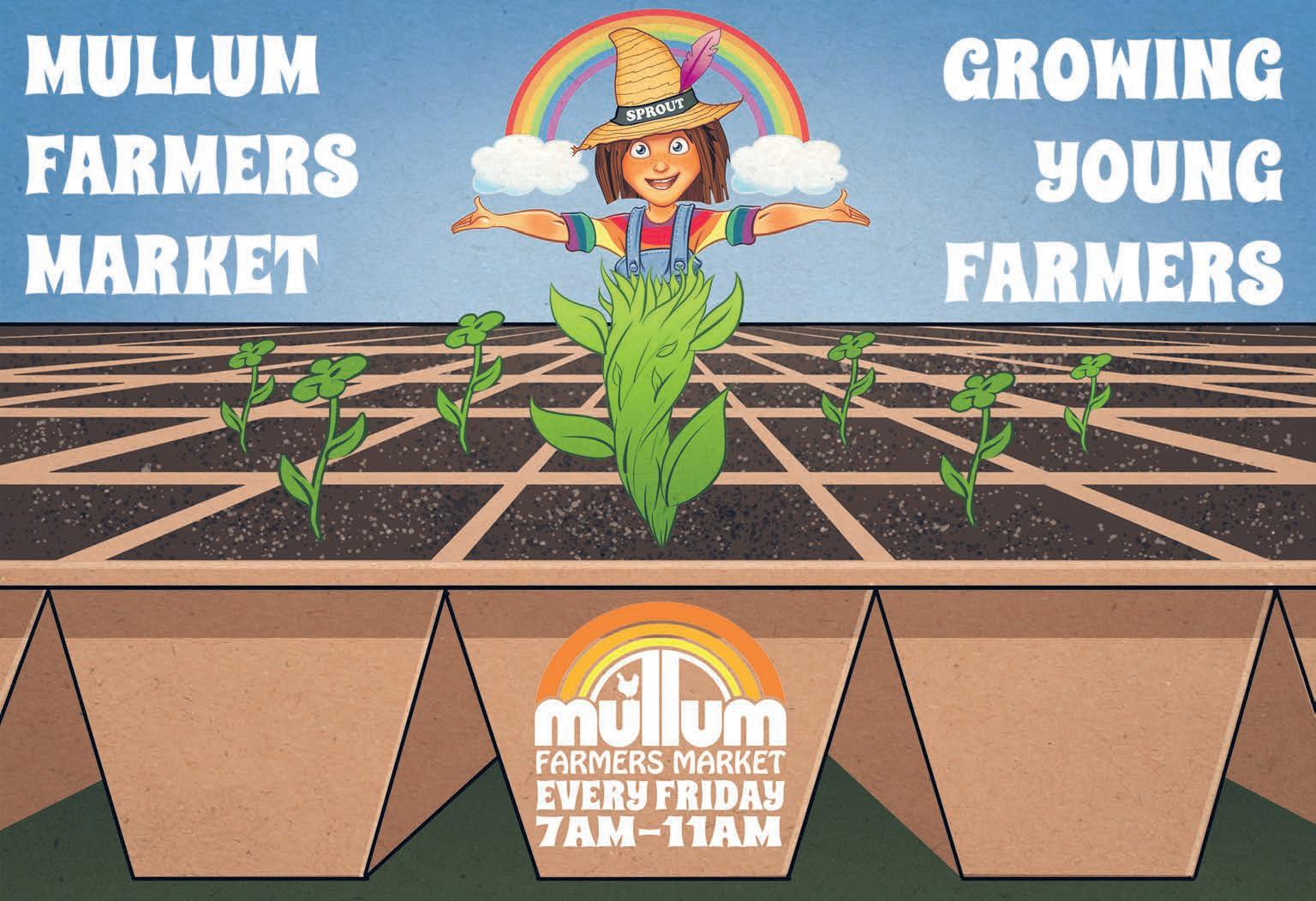
Humans are now at a stage in our relationship to our planet where our activities, and in particular, using the atmosphere as our waste-bin and clearing vast amounts of forest, have raised the global average temperature by 1.1 degrees Celsius.
Although land clearing is still the major cause of biodiversity loss (globally, this is largely for food production), climate change is playing an increasingly important role in the decline of biodiversity around the world. The current level of planetary warming has already had major impacts on ecosystems in the form of increased disease, mass deaths of plants and animals from extreme weather events, supercharged bushfires, and the movement of species away from warming areas to higher altitudes or latitudes.
These impacts have contributed to local extinctions in particular areas, and have led to the first recorded climate-driven extinction of an entire species. The Australian Bramble Cay melomys was the first mammal declared extinct due to climate change back in 2016.

Unfortunately, climate change impacts on the planet’s ecosystems are only expected to increase over the coming decades and could even surpass the impact of human land and sea use activities in driving extinctions. Indeed, many scientists believe we are causing what is being
called the sixth major extinction event since life began on our planet. Based on a systematic review of about 15,000 scientific and government sources, as well as indigenous and local knowledge, the 2019 Intergovernmental SciencePolicy Platform on Biodiversity and Ecosystem Services (IPBES) Global Assessment Report on Biodiversity and Ecosystem Services provided compelling evidence that human activities are causing a decline in nature at a global scale, and at rates which are unprecedented in human history. What’s more, the rate of species extinctions is accelerating, and as the IPBES report says, ‘the health of the ecosystems on which we and all other species depend is deteriorating more rapidly than ever. We are eroding the very foundations of our economies, livelihoods, food security, health and quality of life worldwide.’
Even if we could magically turn off all greenhouse gas emissions by flicking a switch tomorrow, there is already considerable warming (about 0.6 degrees) which is ‘locked in’ and unavoidable, thanks to the decadeslong lag between the atmosphere heating up, and the oceans heating up, before the climate (maybe*) stabilises at a higher temperature.
This means that we would still have to adapt to the physical impacts of climate change, which have been well predicted by climate scientists for the last 35 years, for hundreds to thousands of years to come. These impacts include
warmer average temperatures, more extreme weather events: sea level rise, more frequent and severe flooding, bushfires, and longer and more severe droughts, to name just a few.
Adaptation
Our need to adapt to ongoing climate change in the face of this mass extinction event necessitates an approach to adaptation which also benefits and enhances the natural world; this is referred to as nature-based (or ecosystem-based) adaptation: which can be defined as ‘a strategy for adapting to climate change that harnesses nature-based solutions and ecosystem services’ (UN Environment Program).
Nature-based adaptation often presents as a ‘win-win’ alternative, or complementary strategy to more engineering-based adaptation measures. This approach seeks to protect often vulnerable communities from extreme weather, and also provides many ecological benefits critical for our wellbeing, such as clean food and water. It can also provide and enhance wildlife habitat which simultaneously provides carbon sequestration opportunities instead of the carbon dioxide emissions that are caused by the loss and degradation of that habitat
A well-known example of naturebased, (or Ecosystem-based) adaptation is planting or restoring coastal ecosystems such as mangroves and coral reefs. They provide a natural defence against flooding and increased storm surges, wave activity, and associated coastal erosion. A large study has shown that ‘natural habitats were 2-5 times more cost-effective than engineered structures when it came to lowering wave heights’. An added benefit is that these ecosystems provide not only habitat for biodiversity, they are also a critical habitat for fish nurseries and local food sources.
Restoring natural wetlands and forests, and reforesting large areas, allows rainfall to be better captured and groundwater supplies to be recharged and stored for times of drought. These ecosystems also filter drinking water for millions of people
worldwide. A study of ten different world regions: North America, South America, Europe, Africa, Russia, West Asia, South Asia, East Asia, Southeast Asia and Australasia shows coastal ecosystems globally are a net greenhouse gas sink for carbon dioxide.
And closer to home, in our cities and towns, as the climate heats up and exacerbates the well-known Urban Heat-Island Effect, increased urban tree cover is going to become more and more important. Trees in built up areas act like natural airconditioners, cooling the surrounding air by tapping into deeper groundwater and releasing this water through their leaves (evapotranspiration). A single healthy tree has the cooling power of ten airconditioning units (says science), and also provides shade which can reduce a detached dwelling’s airconditioning costs by 20–30 per cent. The difference in air temperature between urban areas with a lot of tree cover, and those with none, can be considerable – up to five per cent, with enormous environmental and public health benefits.
Now, more than ever, we need to protect and enhance natural habitats and their biodiversity across the planet, and by implementing nature-based (or ecosystem-based) adaptation strategies to combat climate change, we can provide a ‘win-win’ solution – by restoring and enhancing natural ecosystems, we help both nature and ourselves.
www.echo.net.au May 31, 2023 The Byron Shire Echo 23
Bramble Cay melomys are now extinct as a result of climate change.
Photo Luke Leung
Home on the range – time to transition away from fossil dependency
To limit global warming to 1.5 degrees Celsius greenhouse gases must decline by 60 per cent by 2035 (Climatewire). Cars are a major polluter, contributing to 39 per cent of global carbon emissions. By choosing to drive an electric vehicle (EV) you help reduce harmful air pollution from exhaust emissions because an EV has zero exhaust emissions. If plugged into an electricity source powered by renewable energy, as opposed to the electricity grid, the emission footprint decreases significantly.
It’s clear that if we are to meet emission reduction targets to keep global warming to 1.5 degrees, we have to transition to EVs. The target of 3.8 million EVs on Australian roads by 2030 is a pipedream without serious coordinated and sustained policy work that has bipartisan support across all tiers of government.
The first barrier that must be overcome is financial. While EVs first came in at the top of the market, more affordable models are making their way through. A new Toyota Corolla hybrid retails new for around $40k, the Toyota Camry for just under $50k. Companies like the Good Car Company provide high quality and affordable electric cars and vans across Australia to assist
in an equitable transition to a low emission target. Using community EV bulk buys the Good Car Company is able to facilitate significant price reductions in vehicles. Many of these vehicles are purchased from countries like Japan where companies turn over vehicles with very low mileage, so the cars are in excellent condition.
On the upside, running costs are significantly reduced.

Electric vehicles don’t need the servicing and maintenance that petrol vehicles require, and are significantly cheaper to keep on the road, with fuel savings of up to 70 per cent per annum and maintenance savings at around 40 per cent.


Making it affordable
The next barrier is what is termed ‘range anxiety’. That’s the fear that EVs won’t have the required range the driver needs. I have to admit that’s something I worried about. I do a lot of driving. Sometimes I can
drive to Sydney with just a half hour stop for lunch. The Tesla Model S Plaid + can do this on a single charge. It holds about 837kms. But it’s valued at around $109,000. Without significant government subsidies that vehicle is out of reach for your average person. The average spend on a new car in Australia is $40K. However, many buy second hand. I am 55 and I have never owned a new car. So for EVs to be taken up they need to be affordable. And that means they need to be available in the $10–20K bracket.
I test drove a Nissan Leaf from the Good Car Company for a week. It had a range of around 230kms. I realised that when driving an electric vehicles you have to rethink the way you use a car. You have to think about where you need to go, and where you can charge if

you need to cover longer distances in a day. You can charge your EV overnight from your domestic electricity supply. Obviously, the lowest emission way to charge is if your house is on solar. I don’t have a battery so my solar is active only during the day. When I was night driving this was optimal as I could charge during the day. But for day driving I needed to plug into the electricity grid.
Access to solar powered super-fast charging stations is imperative if we want drivers to make the switch to EVs. They are able to charge your car in around 20–30 minutes, as opposed to overnight. Or even a few hours. Parking provides an opportunity for vehicle to recharge, with many councils and businesses providing spots that have charging stations.
I loved driving an EV. They’re quiet, responsive, and surprisingly powerful. I was amazed at the car’s capacity to go from 0 to 100. Even at a lower range, once I rethought my day, and where I was going to park, I could manage the range. I never ran out of charge. It was a bit like driving my iPhone. I just needed to remember to charge the damn thing.
And while 200kms is never going to be enough for my longer travels, it certainly covers daily local driving. We are a two-car family – so I am working towards replacing both vehicles with EVs. A cheaper, low range EV for local driving, and a bigger investment in an EV with a longer range.
So bring on some substantial government subsidies to help us drivers transition!
Happy hens lay sensational eggs!
• Real pastured open range rich in natural Omega 3’s.
• Real pastured and open range eggs, rich in natural Omega-3s.
• Idyllic chook friendly habitat on carbon positive farm.


• Idyllic chook friendly habitat on carbon farm.
• No debeaking (we’re one of the few who don’t).
• No debeaking (we’re one of the few who don’t).
• Fed certified organic grain and rich pasture.

• Fed certified organic grain and rich pasture.



• Maximum stocking density of 600 hens per hectare.
• Maximum stocking density of 600 hens per hectare.
24 The Byron Shire Echo May 31, 2023 www.echo.net.au ENROL NOW IN OUR SUSTAINABLE LIVING COURSES RTO: 90013 02 6684 3374 BYRONCOLLEGE.ORG.AU CERTIFIED ORGANIC FREE RANGE EGGS
the welfare of our feathered
we give them an idyllic habitat
We value
friends and that’s why
with plenty of space to roam.
WWW.ORGANIGROW.COM.AU
Mandy Nolan
4
Left: An electric Nissan Leaf. Right: An electric MG.
‘Bring on some substantial government subsidies to help us drivers transition!’
Hints for living a sustainable life
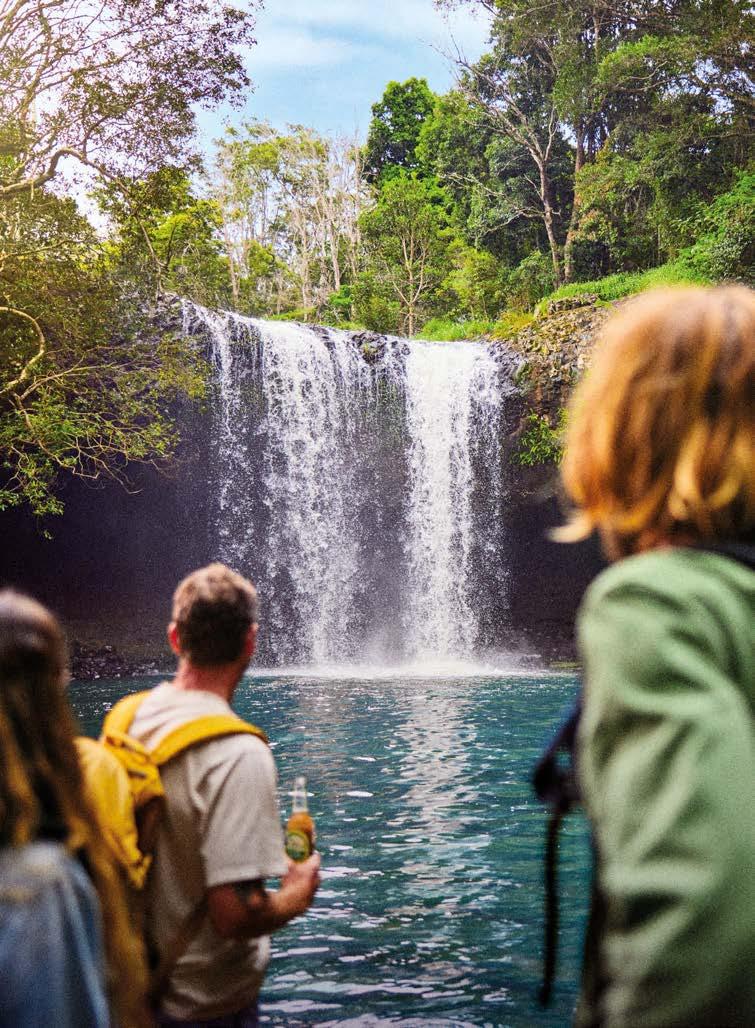
The zero-waste movement and creating a circular economy
Jo Immig
Nature doesn’t waste. Yet despite being a part of nature, it’s we humans who invented waste. For all our grand achievements, this certainly isn’t one. Plastic waste now pollutes the entire planet. It’s turning up inside our bodies and impacting future generations. What went so wrong and how can we fix it?
Nature is a magnificent recycling system where everything is decomposed and renewed. Organic materials go round and round in a virtuous circle creating life. Somewhere along the line we exited the circle and sidelined nature. The exploitation and commodification of resources and a production line approach fuelled the industrial revolution. The resulting take, make, waste paradigm drives overconsumption and a linear economy which answers to the demands of the marketplace, not nature.
With our cleverness we invented materials nature has never experienced and doesn’t know how to break down faster than the rate at which we create them. The numbers
are staggering. Globally we produce around 3.5 million tonnes of plastic and other waste every single day. Plastic is particularly problematic with its fossil fuel origins, toxicity and resistance to biodegradation.
The plastic problem is so enormous; we’re stashing it in giant warehouses, burying it, burning it, and dumping it at sea. In the scramble to solve the plastic crisis false solutions are being proposed such as processing and rebranding plastic waste as ‘fuel’ and sending it to poor countries to burn in unregulated furnaces.
Perversely waste itself has become a commodity and waste disposal is an industry with inbuilt incentives to keep creating waste. Nothing demonstrates this more aptly than the waste incineration industry. Waste incinerators cost around half a billion dollars and the corporate owners demand contracts to supply waste to burn for decades. In our uncertain climate future, further propping up the fossil fuel industry to keep making plastic isn’t a solution, it’s part of the problem.
What can be done instead?
Governments must adopt zero waste policies and subsidise the circular economy based on the reuse and the regeneration of materials and products in ways that don’t threaten the environment and our health. Imagine if ‘built in obsolescence’ was outlawed and every product could be shared, repaired, upcycled, recycled, or composted until its end of life?
Zero waste policies are being successfully implemented, including in large cities such
as San Francisco where zero waste commitments are legislated and funded. Zero waste movements are rapidly gathering momentum across the world.

Despite the citizenry being on board with solutions in Australia, successive governments have tinkered at the edges, leaving waste to the marketplace to solve. Clearly it hasn’t worked. It’s taken decades of concerted community effort just to ban single use plastic bags and get container deposit schemes up and running. Governments at all levels must adopt zero
waste policies and fund the right solutions. We need to get back to the circular economy with nature at the core
More than recycling needed

Waste activists say, ‘we can’t recycle our way to a sustainable future’. Why? Recycling is of course part of the solution, but we’ve forgotten about the importance of the other R’s: refuse, reduce, reuse, recycle and rot.
Industry lobbyists, fearing legislation, hijacked the
waste debate by dangling the recycling carrot. By focusing solely on recycling, they gave themselves the licence to continue the take, make, waste production line. Only around eight per cent of plastic gets recycled since most plastics can’t be recycled due to their composite nature and properties. Industry knows this and is now promoting the idea of burning plastic in waste incinerators and greenwashing it as ‘energy recovery’. The idea of ‘zero waste’ might sound challenging since we’ve become so accustomed to waste. It might raise fears about missing out. The philosophy of zero waste aims to unroot the causes of wastage altogether. Nature has figured out what to do with ‘waste’, now we need to mimic those solutions and build them into the design of all our materials and products. Each one of us can do our bit with our choices and by refusing, re-using, upcycling and composting where we can, but to really solve the problem we need to lobby governments at every level to adopt and fund zero waste policies.
www.echo.net.au May 31, 2023 The Byron Shire Echo 25
5
Maria from the Empire Cafe holding her reusable cup. Photo Tree Faerie
New strategies needed to create a liveable future
Aslan Shand
It is no longer in the never never, or even twenty to thirty years away, that we might see our first breaches of 1.5 degrees Celsius in global heating; according to the World Meteorological Organisation (WMO) it is likely to happen in the next five years. That is the global average, there are areas that have already breached the 1.5 degree threshold because not all parts of the world heat at the same rate For example the Arctic has already seen a rise in temperature of three degrees or more.
According to the Global Annual to Decadal Climate Update for 2023–2027, released in May 2023, there is a major likelihood (98 per cent) that at least one of the next five years will be the warmest on record. There is a high likelihood (66 per cent) that the annual average near-surface global temperature between 2023 and 2027 will be more than 1.5°C above pre-industrial levels for at least one year.
What happens at 1.5 degrees?
The Intergovernmental Panel on Climate Change (IPPC)
has summarised what is likely to happen when the global average temperature reaches, and moves beyond, 1.5 degrees Celsius. Sea level is expected to rise by 26 to 77 centimetres, putting 10 million more people at risk from coastal storms and flooding. Heat waves will continue to get worse, exposing 14 per cent of the world’s population to extreme heat. Up to 90 per cent of all coral reefs could die out, and about seven per cent of Earth’s land area could shift into a new biome, meaning grasslands turn to desert, tundra turns to forest, etc. This affects where we can farm, how stable our future water supplies will be, how we will be able to generate energy and how we will be able to support both humans and other species on the planet into the future.
For people in the Northern Rivers the impacts of climate change have already been experienced over the last five years as drought was followed by the 2019–20 Black Summer fires. This was followed by three years of La Niña wet weather, which led to the devastating 2022 floods with people still left homeless as the government and insurance

companies struggle to meet the needs of housing and infrastructure for the current population in the region.
The Bureau of Meteorology (BOM) has now predicted that there will be a quick swing to a dry El Niño period in Australia without the usual break, or neutral period, between the wet and dry periods usually experienced. Once again this will lead to a high fire-risk summer as the high levels of vegetation growth from the last three wet years dries out.
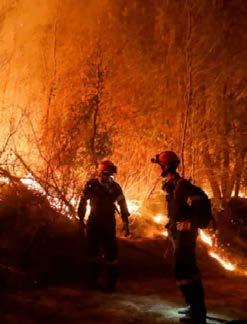
Fossil fuels
In 2021 the International Energy Agency (IEA) made a clear statement that if we are to stay within the safe limit of 1.5 degrees of global heating and meet net zero emissions by 2050, no new coal-fired power stations can be built, and development of new oil and gas fields must stop. This point was reiterated by UN Secretary General, António Guterres, in May this year when he called for:
‘No new coal and the phasing out of coal by 2030 in OECD countries and 2040 in all other countries.
‘Ending all international public and private funding of coal.
‘Ensuring net zero electricity generation by 2035 for all developed countries and 2040 for the rest of the world.
‘Ceasing all licensing or funding of new oil and gas – consistent with the findings of the International Energy Agency.
‘Stopping any expansion of existing oil and gas reserves.
‘Shifting subsidies from fossil fuels to a just energy transition.
‘Establishing a global phase -down of existing oil and gas production compatible with the 2050 global net zero target.’ He called not only on
governments to prepare plans for these actions but also investors and fossil fuel companies to be a driving force behind this transition.
What can we do?
At the recent 50th Anniversary of the Nimbin Aquarius Festival, when attendees asked the question ‘Do we still need direct action for the environment?’ The answer was an emphatic, ‘Yes’. The question you need to ask yourself is what action can you take?
We can all reduce our emissions by hooking up to solar, composting, getting on
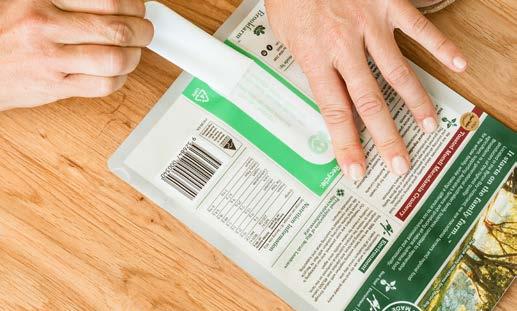
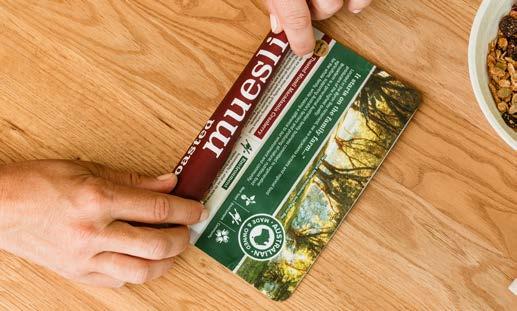


a bike or using our legs instead of getting in a fossil fuelled vehicle – but one of the most important things we can do is to hold our governments, and the parties you vote for, to account. It now requires large systemic change to produce an effective response to climate change.

From planning for bushfire response, water security, reforestation and regenerative farming to taking into account the risks of building on floodplains or landslip areas, every level of government needs to take action to ensure their citizens’ safety. This will come at a cost, both to speculators like land developers who have been pursuing developments on floodplains (such as at 60 Tringa Street in Tweed or Iron Gates at Evans Head), and to governments at all levels.
From the Land and Environment Courts, to federal, state and local levels of government there needs to be a quick and effective response to the calls by the IEA, the IPPC, the UN and local communities who are warning us that business as usual is no longer an option if you want to keep the temperature rise below 1.5 degrees Celsius.
26 The Byron Shire Echo May 31, 2023 www.echo.net.au ROLL‘N’ RECYCLE I N YOURHOME RECYCLING B I N NEW recycling
for soft plastics. JUST ROLL ‘N’ RECYCLE... AT HOME! Available at your local IGA, independent grocers, health food stores and online. Learn more and try our world first recyclable packaging. 6
solution
Left: Fires on the island of Evia, Greece 2022. Photo ABC Right: Floodwater damage at the new Byrrill Creek bridge, Northern NSW after the February 2022 flood.
What does the current federal government solar discount mean for you?

The federal government provides a solar discount to home owners and businesses in Australia that install a small scale renewable energy system (solar, wind or hydro) under the Small-scale Renewable Energy Scheme (SRES) to help with the purchase cost. Installing an eligible system allows the creation of Small-scale Technology Certificates (STCs). The number of STCs created is based on:
• The amount of renewable electricity the system produces or the amount of electricity consumption it reduces.
• The climate region where it’s installed.
Under the package, the federal government will pay around $300 per kilowatt towards the cost of a solar system.
Three great packages if you mention this ad!
Let’s break it down
Maxine and Daniel are considering a 5.81kW solar system, supplied and installed by ProSolar for $8170. The federal government discount for this system is $2432 (at time of publishing). This brings their system cost down to $5738 saving them $1750 per year enabling them to pay back their investment in 3.13 years!
Alternatively the same system can be financed for $32 per week. This can be an attractive way to reduce your bill and put the money you would normally pay your power company into your very own power system in your rooftop.
ProSolar provides advice and guidance in a simple and easy way, to ensure you select the optimal solution for your home and budget. This is the best opportunity Northern Rivers families and business owners have ever had to generate our own power. For more information, call ProSolar on 02 7912 0760 or 0482 082 304.


4.15kW Solar System
• 10 x Canadian 415W panels with a 25-year product and 25-year performance warranty
• 1 x GoodWe 4.2kW inverter with a 10-year premium warranty
• Cost $5,995
• Less federal government discount of $1,710
• Total cost after discount = $4,285 or $22 per week
6.64kW Solar System

• 16 x Canadian 415W panels with a 25-year product and 25-year performance warranty
• 1 x GoodWe 5kW inverter with a 10-year premium warranty

• Cost $9,300
• Less federal government discount of $2,774
• Total cost after discount = $6,526 or $33 per week

8.71kW Solar System
• 21 x Canadian 415W panels with a 25-year product and 25-year performance warranty
• 1 x GoodWe 8.5kW inverter with a 10-year premium warranty
• Cost $12,454
• Less federal government discount of $3,648
• Total cost after discount = $8,806 or $45 per week
The above prices include supply, installation (standard installation on a tin roof) and GST. The federal government discount is subject to change at anytime.
www.echo.net.au May 31, 2023 The Byron Shire Echo 27 Advertisement
ProSolar has designed three great packages to help you take advantage of the federal government discount.
ProSolar Australia 91 Lockton Road Bexhill, NSW 2480 02 7912 0760
prosolaraustralia.com.au
|
Maintaining the balance – the way of the future
Belle Budden
In a board context sustainability is the maintenance or support of a process or system continuously over time. In a First Nations context sustainability is about being in relationship with Country. This can be described as conscious and intentional strategies designed to create and maintain a balance between humans and the natural world and to preserve that balance for the benefit of future generations. Colonisation and more recently globalisation have impacted upon indigenous peoples globally and interfered with these relationships with Country that have maintained sustainability for thousands of years. The short-sighted preoccupation with consuming everything for profit has led to short-sighted decisions to the detriment of future generations.
Traditional ecological and cultural knowledge held by indigenous peoples globally is recognised as pivotal to understanding and building resilience and survival in the face of intensifying climate change. However, this knowledge is still not prioritised, recognised as technical or expert, or resourced appropriately to be effective, and many bureaucratic barriers continue to prevent First Nations people leading sustainable approaches to care for Country.
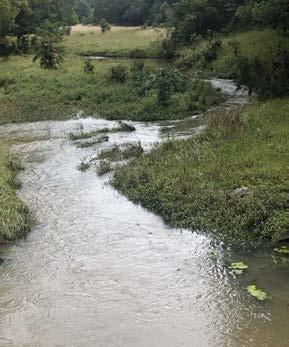
For more than 50,000 years, Australia’s First Nations people continued to care
for Country with land management practices that worked with, and enhanced, the natural environment. Today these are called ‘cultural land management practices’ as they are part of an ongoing relationship within a cyclic framework that responds to the seasons. Everything has story, and these stories are an ongoing system of knowledge that is intrinsic to caring for or ‘managing’ the land.
Understanding the seasons of Country and the movement of the stars; understanding the relationships between species known as ‘indicator species’ and hunting in response; using traditional burning regimes; using aquaculture, including fish traps; and the cultivation and storage of plants among other practices, Mob were able to create systems that were sustainable and supplied them with the food needed. These systems have endured for thousands of years.
Totemic lore
Each individual was required to contribute to the system of sustainability and totemic lore was one aspect of the responsibilities to Country. Totems connect a person to the physical universe, to land, water, the geographical features of Country, and to animals. In First Nations cultures, individuals are required to care for totems and manage the sustainability of totems and their interconnectivity throughout Country.
First Nations people are accountable to
our totems and must ensure that they are protected so they thrive for future generations to inherit.
The NSW National Parks and Wildlife Service (NPWS) is working on a new Aboriginal joint management model for NSW national parks. Joint management of national parks involves Aboriginal people and the NPWS working together to protect natural and cultural heritage. In the Byron Shire the Arakwal people have been internationally recognised for their work in joint management and are a model for government moving forward.
NPWS are expanding Aboriginal joint management across the national park estate. The new model will provide for the potential handback of title to all NSW national parks covering nearly ten per cent of the state over a 15 to 20-year period. The proposed model aims to deliver economic benefits for
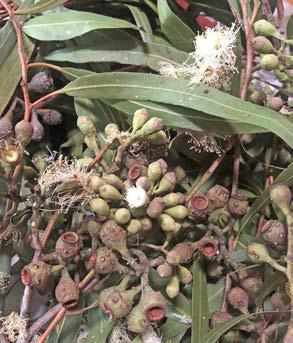
Aboriginal communities by increasing Aboriginal employment and creating additional opportunities for Aboriginal businesses, as well as strengthening the role of Aboriginal communities in decision-making and enhancing the protection of cultural heritage. This is a significant step forward for NSW but is behind the practices of Victoria and Queensland and falls significantly short of the calls for ‘Land Back’.
Holistic and interdependent
First Nations sustainability frameworks are holistic and respect the interdependence and interconnectivity of all aspects of Country. Everything has a place and a part to play in healthy Country. In many communities, First Nations people struggle to live on their Country. For First Nations people to play our part in healing Country and
restoring a sustainable balance we must be prepared to commit a place on Country for First Nations people to live.
First Nations access to Country for housing and cultural practice remains an element of sustainability and is recognised as a right under the United Nations Declaration on the Rights of the Indigenous Peoples. As Mob continue to lead in conversations of sustainable land management, and caring for Country, there needs to be an acknowledgement of past injustices that have removed people from Country and prevented the acquisition of intergenerational wealth. Scales must be tipped in favour of First Nations people to address these imbalances and enable Mob to access stable housing and places for communities to gather, heal, and continue to practise culture.
The dominant systems have disrupted cultural knowledge systems and in turn impacted on sustainability across many ecosystems. By comparison, Australia’s colonial history has been considerably short, but has managed to cause havoc to these enduring sustainable systems. Rectifying the damage is urgent and requires drastic action through multilateral commitment of government and industry.
It is time to elevate First Nations people’s knowledge of and relationship with Country and return a balance of power and authority to cultural land management and access to land.
• We upcycle all our gloves into a product used to make kids playground equipment.
• We are conscientious recyclers.
• We are a collection site for all used oral care products, which we recycle.
• We are paperless.
• We use technology to lessen our negative impact on the environment.
• We used low or no VOC, locally sourced, sustainable materials on our fit out.
• We choose to use the most environmentally friendly, bio compatible materials.

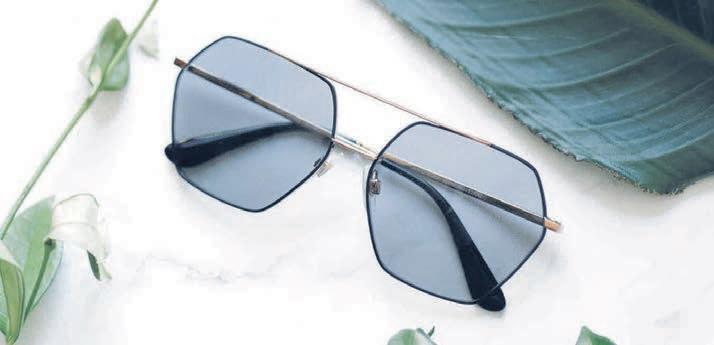
• We have no carbon footprint.
• We are the only carbon positive dental practice in the world.


28 The Byron Shire Echo May 31, 2023 www.echo.net.au
Dr Marcus O’Meara B.D.S | Dr Louise Barr, B.D.S
Dr Karl Batorski B.D.S
Carbon Neutral since 2019 19/5 Easy St, Byron Bay 60 Stuart St, Mullumbimby 02 6694 3083
Ms Caitlin Wilkie, B Oral H (OHT) | Mrs Rachel Andersson, B Oral H (OHT)
8
The vehicle for a small planet
David Lisle



The bicycle is the perfect vehicle for a small planet. As well as being hyperenergy-efficient and super-fun, one of its key attributes is that it won’t get you very far in a hurry. It therefore offers a pathway by which we might move towards a slower, more localised, less destructive economy.
The bicycle is a human scaled technology. If it seems slow, that’s only because we are accustomed to such a fast-paced existence; to a world of instant gratification.
Cyclists, especially those riding long distances, are generally considered strong and fit, and for this they are sometimes even valorised. But a more important credential is patience. If we want to challenge the mindset of endless growth and the wanton pursuit of wealth for its own sake, then perhaps we should embrace the virtue of slowness?
Car culture, or automobility – the system of mass car travel and its related ideology – is all about speed and overconsumption. It assumes a God-given right to get wherever you want, whenever you want, in the comfort of your private motorvehicle, in the minimum time, on public roads.
The bicycle presents a counterpoint to all this. It is small, quiet and slow, requires minimal infrastructure, and


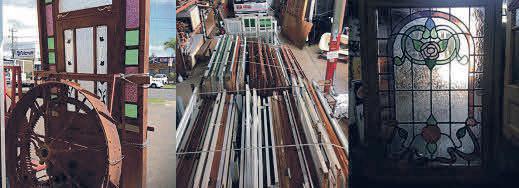







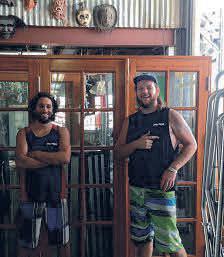

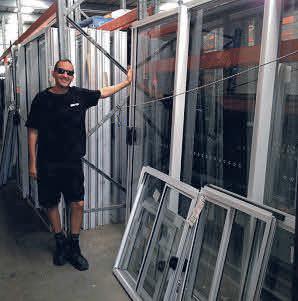


is health enhancing and socially inclusive.
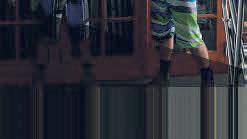


Localisation







Comparing pushbikes to cars is kind of weird though; like comparing apples to oranges. The thing about cars is they expand horizons. By compressing space and time they shrink the world, much like jet travel. By contrast, bicycle use is selflimiting and when applied rigorously creates new time-space relations and forces localisation on us.
So when you see energy efficiency analysis implying that an electric car uses, say five times as much energy as a bicycle (or an internal

combustion vehicle using thirty times as much) – on the basis of megajoules per passenger km – it is deceptive, because cars take you further than you might otherwise travel under your own steam. As the world has grown ever more affluent in recent decades, resource use and polluting emissions have risen far more rapidly than the technological improvements that ought to have mitigated them. Technology has been no match for our extravagant consumption. And yet, amid all the ominous signs of climate breakdown, we muddle along much as before, patiently waiting for some new technology to bolt onto our existing lifestyles so
that we might not have to change, while blaming governments for not making laws to stop corporations from selling us stuff which poisons our planet (like oil).
It is true that while individuals make choices, these choices and actions are framed by the social context in which they occur. But there must be a point when our actions match our lofty rhetoric; where we walk the walk. I am a partisan here of course. I have committed two decades of my life to the bicycle and remain a committed cyclist and bicycle advocate fighting for our rightful place on the road. And I work in a bike shop.
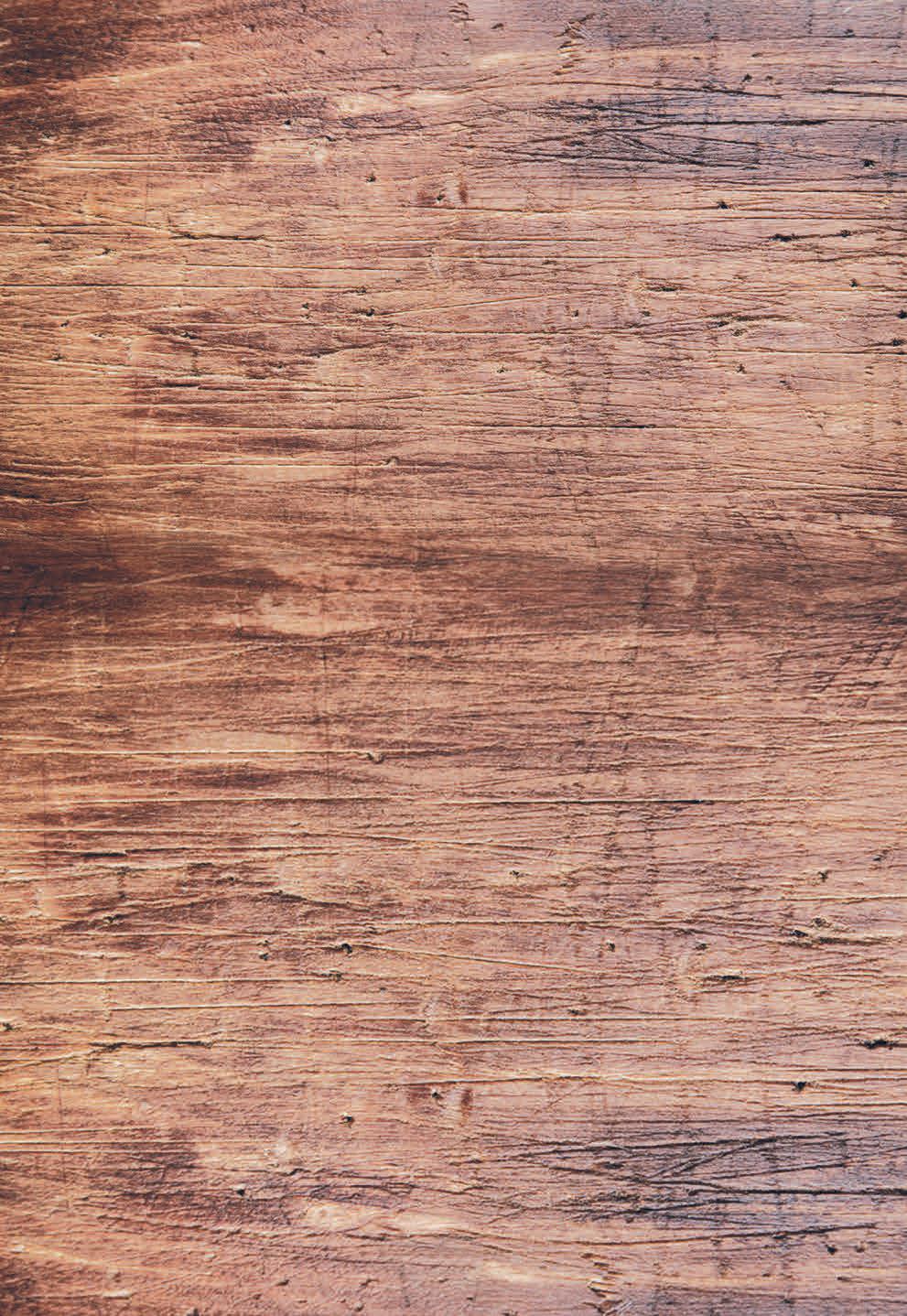
At the onset of the 1970s energy crisis, Austrian priest and polemicist Ivan Illich called for energy restraint in a book called Energy and Equity Illich understood that beyond a certain point energy consumption doesn’t improve human welfare.


Rather, it destroys the earth and degrades social relations by, among other things, concentrating power and capital in the hands of the few. The book’s first chapter finishes with this fine prescription: ‘Participatory democracy demands low-energy technology, and free people must travel the road to productive social relations at the speed of a bicycle.’
Last year, the United Nations General Assembly called on member states to promote bicycle use, improve road safety and ‘integrate the bicycle into public transportation, in urban and rural settings’.’. The resolution acknowledged ‘the uniqueness, longevity and versatility of the bicycle, which has been in use for two centuries’, calling it ‘a simple, affordable, reliable, clean and environmentally fit sustainable means of transportation, fostering environmental stewardship and health’.

The resolution referenced another from 2018, which had declared June 3 World Bicycle Day. That’s this Saturday. What better excuse to get out and ride?

www.echo.net.au The Byron Shire Echo 29 Hints for living
sustainable
BUYING & SELLING, FROM BALLINA TO BEENLEIGH 6 DAYS A WEEK... RED NED’S SALVAGE & SECONDHAND 07 5524 4244 10 echonews.com.au Thursday,May24,2018 Wearethebiggestrecyclingyardonthecoastwith over 2acresofstocktochoosefromincluding: Hugerangeofhardwood Building,demolishing,Renovating? Giveusa ring before yougetthewreckersin. We paycashfor everything. DEMOYARD We are the biggest recycling yard on the coast with more than two acres of stock to choose from including: • Huge range of hardwood • Architectural features and unique one off items • Doors, Lighting, Bathrooms MON–FRI 8.30am – 4.30pm SAT 8.30am – 1.30pm DST
a
life
Photo David Lisle
9
‘Beyond a certain point energy consumption doesn’t improve human welfare. Rather, it destroys the earth and degrades social relations.’
What makes food production ‘sustainable’?
 Jo Immig
Jo Immig
Even primary school children these days ponder where their food comes from, and whether it is produced sustainably. But ‘sustainability’ means different things to different people, so how can we even assess it?
If we accept sustainability generally means ‘meeting the needs of the present without compromising the ability of future generations to meet their own needs’ it gives us a broad definition to contrast different food systems.

Assessing any food system requires an understanding of how the food is produced, distributed, stored, packaged, consumed and the waste it creates. It should also consider how water, land and soil resources are used, as well as ethical questions about the way we treat other species. There are social considerations such as First Nations knowledge and rights, farmers’ livelihoods, and community health and cohesion.
As the impacts of the climate and biodiversity crisis worsen, we’re also challenged to consider the embedded fossil fuel dependence and greenhouse gas emissions of food systems and food insecurity in the face of natural disasters, economic instability, and projected population increases.

An industrialised food system was introduced after the second world war, so it hasn’t been around all that

long. It was a deliberate policy of the US government, sold to the rest of the world as the ‘green revolution’. Its goal was to replace a network of small family farms and communities with concentrated larger farms producing more ‘efficiently’ while freeing up labour for city factories.
It was a ‘get big or get out’ approach entirely dependent on mechanisation, synthetic fertilisers and pesticides, antibiotics and, more recently, genetic engineering and robotics. Its widespread application swept aside generations of local farmers and cultural knowledge, carefully maintained healthy soils, a diversity of plant varieties, seed saving and good nutrition.
Instead, industrial agriculture focused on just a few crops of

high-yielding varieties of wheat, rice, soy and corn, concentrating the ownership of plant genetics in the hands of a few corporations. These crops are now used to feed animals in industrialised animal production and for processed foods.
Yield increase stalled
Industrial agriculture’s main claim to success is that it tripled agricultural production output over sixty years, providing an abundance of low-cost food, apparently saving millions from starvation as the population rapidly grew. But at what cost?
Yield increases have now stalled and it’s widely documented the industrialised food system, entrenched in the global economy,
has dangerously polluted soils, air and water, reduced biodiversity through land clearing, and diminished genetic diversity. It has also contributed to a worldwide obesity epidemic, malnourishment, antibiotic resistance, and increased risks of zoonotic disease outbreaks. There are food deserts in wealthy food-producing countries where people can’t access nutritional fruit and vegetables at affordable prices. Globally, around one third of food produced is wasted and yet there are still millions going hungry every day. These are not the signs of a food system meeting the needs of the present population let alone future generations. We find ourselves on the precipice of change once more. Some argue we must continue the high-tech
path and put our faith in global markets, corporations, and genetic engineering to keep feeding us into the future.
Meanwhile there’s also a growing global movement of farmers and community moving away from heavy input agriculture and re-localising food systems. A farming revolution working with nature and ecological resources, rebuilding local knowledge and seed diversity and growing local food economies.
Shortening supply chains between where food is grown and how it is distributed can improve its environmental footprint and help build food resilience and community. Eating more seasonally and reducing animal-sourced foods can help to reduce the carbon footprint of food. It’s a common argument levelled against farming methods that protect and regenerate nature, such as organic, biodynamic and agroecological approaches, that they can’t feed the world. Research already shows these methods can yield equally and with subsidies and research there is more potential. Producing food locally and more in tune with nature also protects biodiversity and builds healthy soils and communities. Ultimately though, the issue of feeding the world isn’t just about having enough food to go around since hunger is caused by poverty and inequality – not food scarcity.

30 The Byron Shire Echo May 31, 2023 www.echo.net.au Transform your dream building, renovation or landscaping project into a reality with our one-of-a-kind timber feature pieces that are both sustainable and full of character. Reclaimed timber will add a touch of style to any space, regardless of your budget. MENTION THIS AD TO RECEIVE A 5% DISCOUNT info@offtherailsbyronbay.com.au Ewingsdale, Byron Bay | 0427 904 876 VISIT US offtherailsbyronbay.com.au The largest supplier of reclaimed railway sleepers on the East Coast. FINALIST FOR EXCELLENCE IN SUSTAINABILITY
10
Mullumbimby Community Gardens was started in 2008 and now have organic veggie boxes available every Tuesday 10am–1pm. Photo Tree Faerie





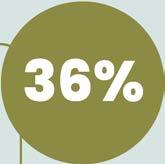
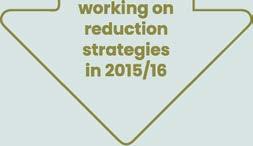



www.echo.net.au May 31, 2023 The Byron Shire Echo 31
Together Did you know you can reduce emissions by reducing your waste. We want to show you what we're doing and how you can do it too. council has a methane gas flare to help reduce emissions produced by landfill Council's overall emissions are down 36%since we started • Waste (closed landfill) 37% Electricity (including streetlighting) 25% • Fuel 7% Waste water 5% • Bottled gas 1% • Supply chain sources 27% We have achieved our goal of sourcing 100%renewable energy! Goa Is To be zero waste to landfill by 2029. Emissions Improved supply chains: Council aims to work with suppliers on their emissions reduction targets, and to practice sustainable recruitment. ., Connected communities ., Less pollution ., Save money Mitigation How can we reduce the impacts of climate change? Flow On Effects Waste ., Cleaner air How does sustainable behaviour impact the wider community? ., Improved health and wellbeing ., Local Jobs ., Increased biodiversity ]�� BYRON sustainability@byron.nsw.gov.au I www.byron.nsw.gov.au � SHIRE -F COUNCIL
Towards Zero
Unboxing a tiny home
Miica Balint
With housing crises, the climate emergency, regional migration trends and the new possibilities for remote work, alternatives to traditional housing are gaining momentum, and regulation in Australia surrounding creative housing solutions will soon catch up.

Between 2012 and 2021, Australian land size for approved new houses has dropped 13 per cent, whilst the floor area of new homes being built has dropped just one per cent. Meaning, we are stuffing substantially big-boned homes into smaller bodies of land. In fact, we are in the global lead for house size in 2023. A coinciding double-decade of steady decline in home ownership, especially steep for young Australians, could be a signifier that this housing trend for Australia is teetering towards grim.
The independent research network AHURI (Australian Housing and Urban Research Institute) outlined that buying a home still resides as a key aspiration among the population, but as costs of living mount and wages stagnate, going little could be giant. Though the origin story of the tiny home movement is unclear, this minimalist approach to living more within our means has had growing global engagement and curiosity since the late 1990s. Considering the actuality of needs in a home, tiny home design is spatially aware and
draws on the not-so-new notion of living gently. Simple. Gentle in the ecological impact we have, simple in the interest of both the planet, and the pocket.

On or off-grid options

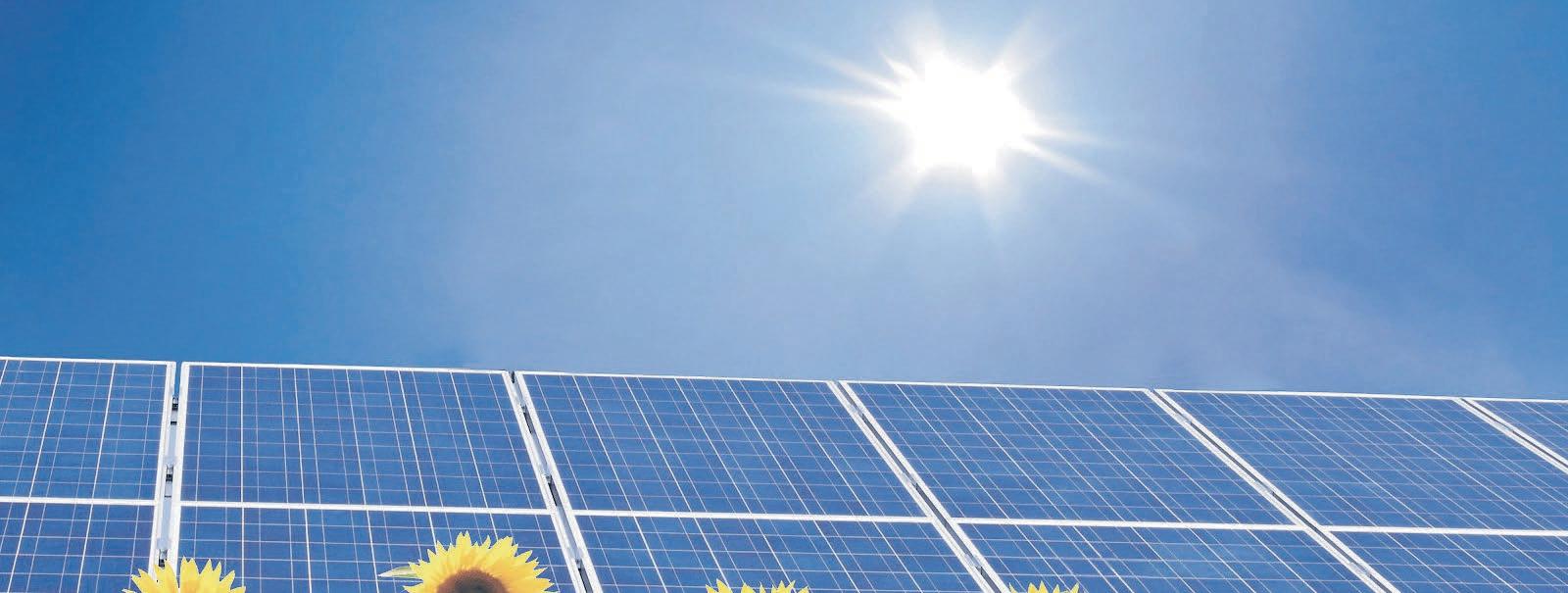
Little life in a tiny home can be powerful for cultivating a sustainable existence. They occupy less land, can be off-grid, tackle consumerism, require less energy, and are generally situated in nature, inspiring a life more in touch with the rhythms of the surrounding environment. Solar panels, a composting or incinerating toilet, a rainwater tank and a greywater system will get your tiny home off the grid. Importantly, the size of your roof will impact your collection of rainwater and solar power, so an additional trailer for solar panels and a detached shed
space with guttering could both be helpful. It would also mean you could place your home in shady spots. With the additional equipment, if it’s a mobile tiny home life you are more inclined to, being off-grid may become challenging. For your house on wheels, there is an equation for the RVTC (realistic vehicle towing capacity), which is fundamental to homes on the move. There is a RV tow check calculator app that can perform the maths on your behalf.
This often-mobile way of life can come up against regulatory obstacles, which can make simplified living tricky. In Australia, regulations on where to park or place your home can be challenging, with varying rules across local councils. Typically
(but not resolutely) tiny homes are met with the same regulations as a caravan. This also means home loans aren’t possible, though some tiny home builders will offer assistance with financing. If it’s a tiny house without the wheels, building them on land that has an existing primary dwelling seems to be the way to go. Approvals are more often than not required, so if you’re a tiny home liver or dreamer, regulation research is essential. Tiny Tect, based out of Queensland, has a valuable database titled ‘Your tiny house without the bureaucracy’.


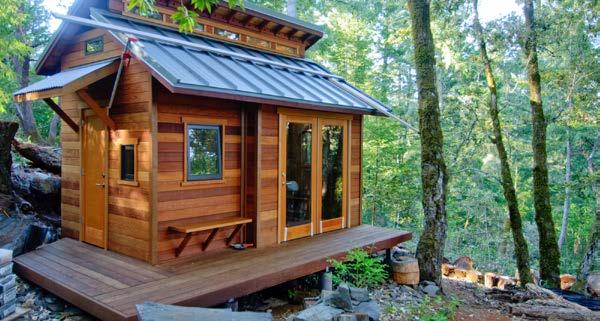
In early 2020 Byron Shire Council lodged a tiny home village proposal, drafted as a measure to address homelessness in the region. The
proposal was withdrawn at the tail end of 2021, and while the motive for a tiny village on council land was exciting, the village premise was temporary, which comes up against the same regulatory obstructions that tiny homers currently face. If dwelling regulations were relaxed, multiple tiny homes could be situated on larger plots of land, igniting a sense of community living, away from caravan parks and temporary life. Tiny homes could share communal areas like a shed and edible garden as well as rainwater and resources, which could make the downsize less of a giant transition. The same goes for the less community-inclined, who would face less difficulty putting their tiny dream on permanent soil.
32 The Byron Shire Echo May 31, 2023 www.echo.net.au Proudly serving Tweed and Byron for over 25 years… more than any other solar company locally. OFF GRID SPECIALISTS Real business, no subcontractors, and actual warranty support. Family owned, family run. Custom designed systems. Authorised dealers for Hyundai, Q Cells, Fronius, Selectronic, Century yuasa, Tesla and Powerplus. Call us on 6679 7228 / M: 0428 320 262 E: sunbeamsolar@bigpond.com Electric Lic 124600c
quality, unrivalled knowledge and support. Authorised service agents for Selectronic, Fronius and Tesla products. Accredited for all types of solar Hybrid off grid and on grid.
Best
12
Left: Tiny home in nature. Photo Ben Chun/flickr.com
Tiny home on wheels. Photo faircompanies/flickr.com
‘Little life in a tiny home can be powerful for cultivating a sustainable existence.’
Hints for living a sustainable life

Hydrogen: Fossil fuel’s bastard child 13
Charles Boyle
Hydrogen is touted as the fuel of the future that will bring the world to zero net emissions and solve the climate crisis. Hydrogen is the most abundant element in the universe, comprising 75 per cent of all matter, but it rarely exists as a gas and must be separated from other elements. Creating it can be very carbon intensive. Most importantly, when hydrogen is burned it releases more energy than gasoline and only releases water vapour – a truly clean fuel. Will hydrogen solve the climate crisis and save the planet, while allowing us to maintain a high-consumption, growth-based economy? The federal government thinks so, and in the latest budget $2 billion was allocated to hydrogen projects.
Hydrogen production offers significant export opportunities for Australia but with current technology, it does not contribute to a zero-emissions future. The term ‘clean hydrogen’ is pure marketing genius, as deliberately misleading as ‘clean coal’. We all know that hydrogen can be simply produced through the electrolysis of water, but the truth is that 95 per cent of the world’s industrial hydrogen is produced from natural gas and coal. Yes, hydrogen is a product of the petrochemical industry and
The True Colours of Hydrogen
is not sustainable nor renewable. The industrial use of hydrogen for fertilisers and steel production continues our reliance on fossil fuels. Hydrogen burns clean but producing it is a very dirty business.
Sleight of hand
Hydrogen is enthusiastically endorsed by the energy giants (Twiggy Forrest was a major beneficiary of Albanese’s recent largesse) because it ensures business as usual for them because they own the raw materials, the technological infrastructures and the marketing. While the world is ostensibly phasing out reliance on coal and gas, this brilliant sleight of hand turns coal and gas into hydrogen and labels it ‘clean hydrogen’.
Of the seven commercial processes currently in use for hydrogen production, five extract hydrogen
from fossil fuels, emitting greenhouse gases in the process. The processes are labelled by colours:
‘Grey’ hydrogen is made from natural gas using steam methane reforming (SMR) and releases greenhouse gases in the process. It is cheap, dirty, and the most widely used.
‘Black and Brown’ hydrogen use steam reforming of black or brown coal releasing CO2 and carbon monoxide. These processes are even more environmentally damaging than grey hydrogen.
‘Blue’ hydrogen production uses basically grey hydrogen production plus carbon capture of the greenhouse gases produced. Known as ‘low carbon’ hydrogen, it is also based on natural gas. The greenhouse gases produced are simply stored, not avoided
‘Turquoise’ hydrogen is produced using methane pyrolysis of natural
gas, generating solid carbon instead of carbon gas emissions.
‘Pink’ hydrogen is produced by electrolysis of water, using electricity from nuclear reactors. Electrolysis produces no carbon emissions, but nuclear power poses its own very significant threats.
How realistic is green hydrogen?
Last, but most important, is green’ hydrogen: electrolysis powered by renewable electricity (solar or wind) splits water into hydrogen and oxygen. This process uses no fossil fuels and produces no greenhouse gases. The problem is that producing hydrogen from fossil fuels is easy and cost-effective but electrolysis is very expensive and inefficient. The only clean aspect of fossil
fuel-based hydrogen is that it burns clean, reducing some carbon emissions, but that benefit is heavily offset by the production process.
The only ethical, sustainable alternative is green hydrogen, but currently it is an inefficient way of storing renewable energy for later use. It is much more efficient and cost-effective to store solar electricity as electrons, i.e. in batteries. There are 30 million battery-powered vehicles in the world compared to 55,000 hydrogen-powered vehicles; by 2030 there will be an estimated 250 million electric vehicles (EVs) on the planet. While green hydrogen production is still in its infancy, technological advances will inevitably make it a viable alternative to the fossil-fuel based models. Australia with its sunny skies and wind power is ideally placed to be a major producer of green hydrogen, which is why governments are spending heavily on its research and development. The switch to hydrogen will require new production and storage technologies, re-engineered highpressure pipelines and hydrogenspecific appliances for the end user. While we’re not there yet, a hydrogen-powered future is surely coming – bringing profound change to the course of civilisation.
www.echo.net.au May 31, 2023 The Byron Shire Echo 33
>95% of all production <5% Renewable Nuclear Coal Gas Gas Gas Grey
Blue Turquoise Black Pink Green
Public transport needs to be rethought for regional areas
Mandy Nolan
When I was in Melbourne for a month I caught the tram. Every day. It was wonderful.
Instead of negotiating traffic I had the joy of zoning out. Instead of looking at the road, I looked out the window. At my phone. At the other people on the tram. I even used it as an opportunity to sit with my thoughts. The anxiety of ‘where the F will I park’ or the financial slug of $30 for a three-hour spot was gone. I tapped on. I also had the smug sense of satisfaction a climate activist can only get on public transport. I certainly don’t get it in my diesel Jeep. In a world facing cataclysmic climate catastrophe public transport is a no-brainer. Shouldn’t we all be leaving our cars behind if we can? Personal car ownership in major cities is in decline. There’s nowhere to park and when a train or a bus can get you there faster, why would you drive?
Sadly, that’s not the case for us here in the Northern Rivers. If you don’t have a car you’re screwed. You either have to walk long distances or hitch hike, or stay home.
As someone who lives in a region with barely any public transport, I forget that public transport actually exists. To me, it’s just a school bus that I once caught because I lost my licence.

Good planning needed

Anyone who thinks we have adequate public transport needs to do a car fast. Yep, hide the keys for a week and see how easy it is to navigate a regional area like ours without driving. See if you can get to work. To the shops. To your medical appointment. It’s really hard. Try being a young person in Mullumbimby who needs to go to TAFE in Kingscliff. It’s a 30-minute trip by car. If you can find a bus route it’s a three-hour journey that fails to get you there for a standard start. This result is that parents drive their teenagers, and some kids just can’t attend TAFE because they can’t get there. Access to public transport is life changing. It’s not
just about accessing locations – it’s about access to education and opportunities.
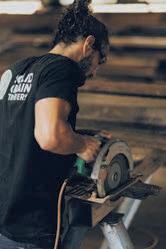

Public transport is utilitarian. Good planning means that systems are built to benefit as many people as possible. Public transport should be like the cardiovascular system –pumping people around the region with joyful regularity. Unfortunately, we are in arrest mode. Because no one in government ever wants to invest in a future they’re never going to reap the voting rewards for.
What are the best ways to improve transport in our region?


Firstly electrify, then scale down the size of the buses, but increase their regularity and expand their reach.

The Joylong E6 looks like a Toyota Hi Ace but features an all-electric powertrain, and seats 14. It’s an electric bus that costs something like $90k. We could buy ten for less than a suburban house in Mullumbimby. We could have buses like this, or slightly bigger, running every hour around the region, linking our coastal villages and our country back roads. Add a bus lane that prioritises public transport or rideshare during peak times and you’ve made it a very attractive option.
Scale and distance have always been barriers to regional public transport investment. We’re an innovative community. It’s time we rethought our transport options. How many people drive empty cars? Surely if people need transport and you are heading in their

direction, your vehicle can become a rideshare. I’ve always picked up hitch hikers, but if you don’t want to stand on the roadside thumbing it, there are some pretty good carpooling apps – like coseats.com so you can schedule a trip. Walking paths and cycleways are also key ways of linking communities, with many cities introducing electric scooters. I’d love to see our region try this, but wonder if scooters would work with long distances in a region prone to heavy rainfall.
I sometimes fantasise about gondolas on the Brunswick River, hot air balloons dropping me at Wategos. We lost our trains, so it’s imperative that we plan for the future, so that transport options aren’t just for the affluent – they are for everyone. And they should be free.
34 The Byron Shire Echo May 31, 2023 www.echo.net.au RECYCLED HARDWOOD Building, landscaping or furniture making? Give us a call before getting new timber! SOLID GRAIN Our goal is to reduce carbon footprint and deforestation that mass timber manufacturers produce. We provide eco-friendly timbers that are sustainably sourced at a fair price. We have stock for rafters, joists, battens, posts and can deliver from Yamba to Brisbane. Open: Mon–Fri 7 30am–3 30pm 268 Ewingsdale Rd, Byron Bay 0482 964 574 solidgraintimbers com au • STRUCTURAL TIMBERS • DECKING/FLOORING • FEATURE BEAMS
14
Small electric bus used in Lithuania. Photo J Stacevičius/LRT Joylong E6. Photo joylongautomobiles.com.au
‘Anyone who thinks we have adequate public transport needs to do a car fast.’
May
Hello! We are ReForest Now, a charity based in the Northern Rivers with the vision of bringing back large tracts of rainforest!
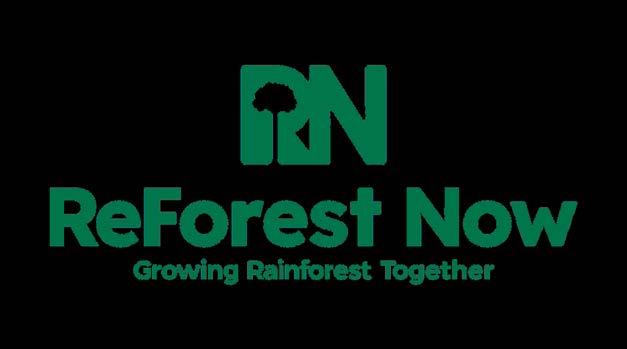

Five years ago we began this journey and in this time over half a million rainforest trees have been planted, mostly in the Byron hinterland. We have steadily created local employment for fifty people and growing each year.


Are you looking for any of the below services?
Tree planting
We plant trees for donors from all around the world. Is your property suitable? We ask landholders to contribute for planting some of the trees at $5.00 each (fert & water crystals inc) and the rest are provided by donors! We require a maintenance agreement to ensure their survival *arrange a meeting with us to find out more.
Bush regen & Camphor culling
We offer qualified bush regeneration teams specialising in rainforest restoration including Camphor laurel drilling. Ask us to come see you for a quote! *planting is often added as part of a regen package.
Rainforest tree & Native foods nursery
Our not-for-profit also operates a native nursery with over 120 species of local rainforest species for sale, including several varieties of edible plants for your garden! Open Monday to Friday 10am to 3pm at 156 Stuart St, Mullumbimby.

www.echo.net.au May 31, 2023 The Byron Shire Echo 35 0461 164 911 planting@reforestnow.org.au 0491 686 052 nursery@reforestnow.org.au 0431 636 608 regen@reforestnow.org.au
us! ReForest Now is a registered charity with the ACNC (ABN 40887914802) Donations over $2 are tax deductible.
Contact
2023 Interested in partnering with us? partnerships@reforestnow.org.au General enquires info@reforestnow.org.au
Councils on the Far North Coast are constantly
Eve Jeffery
Tweed Shire Council working with community
Tweed Shire Council (TSC) works together with the Tweed community to reduce its impact on the natural environment and adapt to climate change for a sustainable future.
Council is continuing its progress towards reducing its greenhouse gas emissions from Council operations by 50 per cent by 2025 and achieving net zero by 2030.
In March this year, installation of the Tweed’s largest renewable energy project commenced at the Banora Point Wastewater Treatment Plant. The size of a football field, the solar panels will increase Council’s renewable energy output to 1.4 megawatts, saving an additional 730 carbon tonnes per year.
Its Environmental Sustainability




Performance report for the 12 months to July 2022 noted emissions from electricity use in streetlights had halved compared to last year due to the replacement of 6,400 streetlights with LED lightbulbs.
The Tweed Organics Processing Facility – which processes food and green waste collected from green bins – has diverted almost 25,000 tonnes of organic material from landfill since its opening in 2021.
The organics collected at the facility is then processed and converted into high quality compost to be used in a range of soil rejuvenation projects.

‘Encouraging the community to use the green bin service or their own composting solution means together we can reduce emissions, maintain soil quality and continue to grow our circular economy,’ said a spokesperson for TSC.
An Australian government grant has enabled Council to partner with Griffith University to understand community perceptions of climate change and experiences with climate action, reducing emissions, and preparedness for extreme weather events in the Tweed.
Two hundred and fifty-two residents of the Tweed Shire completed the in-depth survey, with four follow-up co-design sessions exploring the findings in greater detail throughout May. The conversations will inform how TSC can enable community climate action and provide future support for climate risks and impacts.
Tweed Shire Council is tackling urban heat through its Cool Towns Urban Forest program,
prioritising tree planting in areas of the Tweed that will benefit from increased shade, particularly along arterial roads, shared paths, civic spaces and residential streets with minimal tree coverage. Its goal is to increase the canopy cover in urban areas to 35 per cent by 2030 and 40 per cent by 2040.
TSC actively monitors and manages threats to Bush Stone-curlew, listed as endangered in NSW. Loss of habitat and fox predation are the main causes for this ground nesting bird’s decline.

Through a monitoring program, strategic fox control prior to the commencement of breeding season and nest protection measures, the population of these birds has risen rapidly since a single breeding pair was identified in 2012. There are now at least 159 Bush Stone-curlews who call the Tweed home. ‘For the first time, we are witnessing a natural population range expansion of Bush Stone-curlews into
neighbouring Byron, Richmond and Clarence Valley Shires,’ says TSC.
In 2023 – 2026 Tweed Shire Council will be working with Byron Shire Council and other local LGAs to help protect these unique birds and expand their population further into NSW. Find out more at tweed.nsw.gov.au
Byron Shire Council’s achieving sustainability goals




Byron Shire Council (BSC) has a range of the projects that are helping achieve its sustainability and greenhouse gas emissions reduction goals. Work recently started on Council’s bulk upgrade of 1,147 streetlights which will be replaced with energy-efficient LED lighting which will save on electricity bills and reduce carbon emissions. Later this year, BSC will look to reduce corporate carbon emissions through sustainable procurement and will develop an electric vehicle transition plan for its vehicle fleet.
Have you heard about ‘Re-Market’? It’s the new name of the Byron Resource Recovery Centre’s second hand shop (or tip shop) and it’s all about providing space for workshops and education on repairing and reusing thrown away items. The Re-Market still offers people a place to drop off or buy great second-hand bargains too.
Talking about rubbish, Council staff joined more than 400 volunteers including school students and community groups for Clean Up Australia Day in March this year, and picked up more than 1,200kg of rubbish across Byron Shire.

Ballina
emissions by 2030 using 100% renewable electricity for our operations by 2030
36 The Byron Shire Echo May 31, 2023 www.echo.net.au
Shire Council’s
Change Policy sets more ambitious targets than the NSW and Australian Governments to achieve rapid emissions reduction by: reducing our operational greenhouse gas emissions to net-zero
see what Council has achieved so far at ballina.nsw.gov.au/climate-change-action office 26, 20-1 Porter St, Byron Bay junoenergy.com.au 0425 256 802 patrick@junoenergy.com.au Juno Energy solutions for your project, small, medium, or large Call or email us to find out more. Juno Energy has been offering smarter, more reliable solutions for homes and businesses since 2010. To learn more about some of the clever tools we use to manage electricity costs and build energy resilience get in touch with us. • The Enphase battery and IQ8 is coming • Kempower, better ev charging for business • Tesla, battery options for homes and business • Sunpower, modules for homes & business electrical licence 255292C
Climate
Bush Stone curlew and chick. Photo supplied Clean Up Australia Day Byron Bay.
16
Photo supplied
Hints for living a sustainable life under pressure to innovate in sustainable ways

Staff will be looking at the data surrounding the clean-up and use this to develop proactive and targeted anti-litter campaigns.
The quarterly flying fox count is one way BSC is helping to provide critical protection of this animal. ‘Byron Shire is an area of high biodiversity, and BSC is doing everything it can to help protect this threatened species,’ said a spokesperson for BSC. The council has been promoting the importance of flying foxes through the ‘No Bat No Me’ project, and staff say they are getting great feedback from their school visits and from community groups.
BSC has invested over $100,000 in grant funding to plant and restore koala habitat in strategic locations on private property throughout Byron Shire. Temporary, variable message signs have been installed at high priority sites during the 2022 koala breeding season to alert drivers that koalas are crossing the roads. BSC is currently working with the state government to install some more permanent signage.
BSC’s project ‘Main and Clarkes Beach Dune Recovery Project – Working with Mother Nature (Byron Bay)’ has been chosen as a finalist for the 2023 Local Government Excellence Awards in the category Environmental Leadership. BSC say that the first stage of the project, which aimed to restore the eroded sand dunes and create a more natural dune formation between Clarkes Beach and Main Beach at Byron Bay, was a great success.
A great way for rural landholders and producers to find out more about sustainable agriculture is through Council’s Byron Farmers Network database which now has up to over 350 members who can take advantage of
workshops and training available. BSC is also continuing to mentor some local farmers through The Farmer Incubator program, and to support and promote sustainable agriculture initiatives in the region. For more information, visit: www.byron.nsw.gov.au
Ballina Shire Council’s range of energy efficiency initiatives




Ballina Shire Council is continuing to reduce its operational emissions through a range of energy efficiency initiatives.
Ballina Council has ambitious targets to achieve rapid emissions reduction. It aims to use 100 per cent renewable electricity for its operations and reduce its operational greenhouse gas emissions to net-zero emissions by 2030.
In the past year, emissions have reduced by six per cent compared with the previous year. They are currently generating ten per cent of their electricity needs from onsite solar installations and 50 per cent GreenPower is purchased for over 200 assets.
Sixteen solar power systems have been installed on Ballina Shire Council sites since 2017, a total of just over 1MW. In 2022 Council commenced the roll out of its Water and Wastewater Solar Strategy with the installation of 150kW of solar at the Alstonville and Wardell Wastewater Treatment Plants using the Australian 5B Maverick solar solution.
In addition to reducing emissions at the sites, electricity costs have reduced by around 30 per cent on the previous year. The Water
DON’T THROW ME AWAY..
and Wastewater Solar Strategy will see the installation of another 1MW of solar by 2024. Soon Council will be adding another electric vehicle to its fleet as well as two zero turn electric mowers. You may also have noticed Ballina rangers getting about on e-bikes for patrols.

Council has also recently commenced its operational Climate Change Risk and Adaptation Planning process. This involves identifying climate change risks, assessing current controls in place, and identifying areas where adaptation initiatives are required.
Ballina Shire Council’s Waste Education Team is making great progress delivering programs such as the Let’s Get it Sorted School Challenge. Five schools are on board with this program, each with $500 to spend on resource recovery support and infrastructure.
Other community waste initiatives include the hugely successful Kitchen Caddy Giveaway to divert food waste from landfill; plastic free party kits for loan at libraries and Wardell CORE; and the Scrap Together campaign which promotes use of organics bins and the circular economy.
Ballina Shire Council has developed a draft Biodiversity Strategy, which is in the process of being finalised. That strategy aims to protect, manage, and enhance the local environment with the collaboration of the community and other stakeholders.
Biodiversity outcomes can also be achieved through simple everyday actions, such as planting a tree. The best time to plant a tree was 20 years ago, the second-best time is today. Community members are encouraged to join the Lennox Head Community Tree Planting Day on Friday 9 June 2023, 9am to 12noon. Ballina Shire Council and GeoLINK have hosted this event since 2003 to coincide with World Environment Day. Native seedlings of littoral rainforest species are planted to restore what was once present on the headland pre-1800s.
If you’re interested, meet at the top of Lennox headland (follow signs) with your sun protection, closed footwear and gardening tools (if owned). The Lennox business community and volunteer groups have generously donated a barbecue and refreshments. For further event information contact GeoLINK on 6687 7666. For more information, visit: www.ballina.nsw.gov.au.
Zeo Sustainable Materials is a Byron Shire-based company committed to developing innovative, sustainable solutions for the construction and furniture-making industries.
Zeoboards are a wood and wood-composite replacement made from plant based waste streams, without added glues, petrochemicals or formaldehyde.

Zeo is excited to scale local production, and the first 8-foot x 4-foot boards are expected to roll out in early 2024. A larger facility is planned for 2025 to accommodate increasing demand, once a suitable location has been found and fund-raising activities are concluded.
Follow our exciting journey at the links below.
www.echo.net.au May 31, 2023 The Byron Shire Echo 37
SUPPORT@ZEOFORM.COM - MULLUMBIMBY, NSWZEOFORM CAN TURN ANY
INTO
ARCHITECTURAL
ZEOBOARD.COM @ZEOFORM
PLANT-FIBRE
HIGH-END
BOARDS
by
ZEOBOARD
Ranger on beach on an e-bike.
17
Photo Ballina Shire Council
Can farming and bush restoration be mutually beneficial?

 Aletha Zylstra
Aletha Zylstra
For 253 years European farming methods have colonised and shaped the Australian landscape, contributing to biodiversity loss, canopy destruction, the loss of more than 100 species of flora and fauna, degradation of waterways and topsoil being swept out to sea. More than 1,700 species and ecological communities – found nowhere else in the world – are at risk of extinction, and the greatest threat to Australia’s remaining biodiversity comes from introduced species and habitat loss. Owing to their land use practices, reliance on introduced species and fossil fuel-based inputs, commercial and industrial farming industries are among the top contributors to the climate crisis.
Contrast the environmental costs of colonisation with the results of traditional First Nations farming. These methods – only recently recognised and acknowledged as deliberate and planned efforts to produce abundance – have been practised here for tens of thousands of years. These methods were developed to suit the Australian climate and landscapes, respected and nurtured the ancient soils, and maintained, indeed were integral to the health of, indigenous biodiversity.
The challenge we face is how to restore and protect biodiversity
in the irreversible context of a colonised landscape. In 2021 the United Nations General Assembly proclaimed the ‘Decade on Ecosystem Restoration (2021–30)’ and called for the protection and revival of ecosystems all around the world, for the benefit of people and nature. The declaration aimed to lend the weight and prestige of the UN to the ongoing work of regenerating bushland and other natural areas in the hope of increased government and industry attention and funding.
Innovative primary producers began shifting toward sustainable and regenerative farming practices at least a decade ago; including through the restoration of riparian zones (waterways) often with the assistance of professional bush regenerators and Landcare volunteers. On the whole, regenerative farming practices are all about carbon capture, increasing native biodiversity, and decreasing reliance on fossil-fuel products – all supporting mitigation of climate change.
When Lisa Maclure and her husband bought their Dunoon Macadamia farm in 2017 they had never farmed before. The 2017 floods were a tough start. Lisa credits some excellent advice early after that flood with prompting farm-wide changes that improved its resilience when the 2022 floods came along, and which aided their survival in the current market.
The changes they made focused on four things: creating drainage contours that slowed and spread the water out, decreasing the number and size of the trees, supporting and increasing on-farm biodiversity through bush regeneration techniques, and adopting best-practice research in biological controls. These changes have worked together to improve and stabilise the soil, improve water quality in gully streams, and encourage healthy habitat for predator birds and insects.
Reduction in costs
It’s still early days, but it’s hoped these changes will decrease farm expenditures on pesticide (and herbicide) to treat the inevitable imbalances that a monoculture attracts.

‘The health of the trees has definitely improved… in theory, in time, we’ll see if that has any effect on profits… but there’s a bigger picture we have in mind,’ says Lisa.

With funding secured by Landcare, bush regenerator and native grass enthusiast, Max Watt, has been leading teams of bush regenerators in the areas of Rappville, Kippenduff and Myrtle Creek, which were all severely affected by the Black Summer bushfires, and the 2022 floods. For thousands of years before colonisation the ecology of this country of open grassy forests, winding sandy creeks and seasonal billabongs relied on cool, properly timed, periodic fires for its health and regeneration. Now, the land is largely used to farm cattle, but it is still home to a number of endangered species, such as
We’re Growing.
glossy black cockatoos and ancient weeping lillypillys.
Max explains how on properties where Indigenous burning practices have been maintained the damage from the Black Summer fires was less widespread, less intense, and the recovery faster and more balanced, in terms of plant succession. Also, where stock numbers are low, or cell-grazing is employed, the cattle can play a similar role in the environment to native herbivores, says Max, allowing native grasses, shrubs and groundcover species to be maintained. Properties like these act as cells of biodiversity.
Fostering a more balanced and reciprocal/ regenerative farming system takes patience. Changes that improve water and soil quality and that support riparian health can be relatively simple to instate. According to fire ecologist, Dr Andy Baker, reintroducing traditional burning practices is highly beneficial to whole-of-system health, but much more complex, requiring cooperation between landowners, volunteer groups and local government. Whether measures that increase farm biodiversity and improve resilience will decrease long-term expenditures on pest control, as well as improve quality and/ or quantities of yield remains to be seen, but as Lisa says, there’s a bigger picture to keep in mind. Fundamentally, the climate crisis calls for a restoration of balance.
Through the incredible support of our rainforest rescuers, fundraisers and partners, Rainforest Rescue has built a new Native Nursery capable of producing 150,000 trees a year when at full capacity. This amount is a 12.5x increase over our record year in 2022, which means we have so much further to grow in the future. Our contribution to Australia’s emergent restoration economy is the potential to restore up to 50 hectares of rainforest every year. Together, we’re regenerating country, from the ground up. #TreesAreTheAnswer
UNLESS… THERE’S SOMEONE LIKE YOU…
We can’t buy two very precious parcels of rainforest, Lots 11 and 12, and Protect Them Forever.
Discover the significance of this land using the QR code:

38 The Byron Shire Echo May 31, 2023 www.echo.net.au
DONATE
Rainforest Rescue is a charity registered with the Australian Charities and Not-for-profits Commission ABN 61 086 885 154
TODAY
Max Watt’s regen team at a property in Rappville. Photo supplied
18
Open grassy forest cattle property assisted by bush regeneration in Kippenduff. Photo supplied
LOCAL BUSINESSES PARTNER WITH ROUS COUNTY COUNCIL TO REDUCE WATER USE
Since the 1950s, Rous County Council has supplied councils and customers across the Northern Rivers with a safe and reliable supply of water. From drinking to farming or running a business, a dependable supply of water supports our region’s enviable lifestyle. The primary water source servicing most of the community is Rocky Creek Dam upstream of Lismore. We are privileged that its catchment area is the pristine Nightcap National Park on Widjabul Wia-bal country, delivering excellent water quality for the Nightcap Water Treatment Plant to do its job. Emigrant Creek Dam supplies Ballina and Lennox Head, and we also manage the Wilsons River and groundwater sources that bolster supply during extended periods of dry weather.
Securing a sustainable supply of water for the future is a strong focus for Rous. The combination of a growing population and a changing climate is placing unsustainable pressure on our existing water sources. To face these challenges, we need to take an ‘all options on the table’ planning approach and investigate all the options that are available to us. Our method is holistic and includes water saving initiatives, expanding the capacity of our current supply sources, and providing new water sources.
Many in our community are mindful about how they use water, saving it where they can, and we are pleased to support this conservation through rebates for residential water tanks. However, these actions alone are not enough to guarantee a reliable supply into the future, especially in extended dry periods like El Nino. A resilient and sustainable supply of water may involve one or a combination of different options including water saving measures, groundwater, surface water, purified recycled water and desalination. Diversifying the range of rainfall independent water sources may also offer increased resilience to drought.
Every day, every member of our community depends on water. It takes a strong commitment to long-term planning to safeguard a sustainable supply now and well into the future.
THINK TANK!
Looking for ways to save water?
Think rainwater tank!
Join thousands of locals who have installed a rainwater tank and saved money through Rous County Council’s rainwater tank rebate program.
Local businesses have been taking direct action to reduce their water use by joining Rous’s Sustainable Water Partner Program. One such company to team up with Rous is Cape Byron Power. For more than two years Cape Byron Power has monitored its water consumption and developed projects that optimise its town water use. The project has achieved significant milestones, including the installation of new sub-meters and automated smart water meters, which has helped isolate different operations and provide accurate real-time data on water consumption.

Cape Byron Power’s Co-Generation Operations Manager, Todd Andrews, said smart metering is now indispensable for its ability to monitor any unusual water usage. “Water is an essential part of operations at Cape Byron Power. Water efficiency and optimisation is not only important for our environment, but it makes sound business sense.
Smart metering is an invaluable tool for Cape Byron Power to instantly respond to any unusual spikes in water use. The data that smart metering technology provides means we can efficiently monitor our water consumption and investigate and respond to any abnormalities in a timely manner. It has also allowed for the identification and implementation of projects that reduce demand on our precious drinking water supply,” Mr Andrews said.
Are you a local business? Benefit from reduced water use now. Connect through the QR Code for more information.

Residential Rainwater Tank Rebate Program
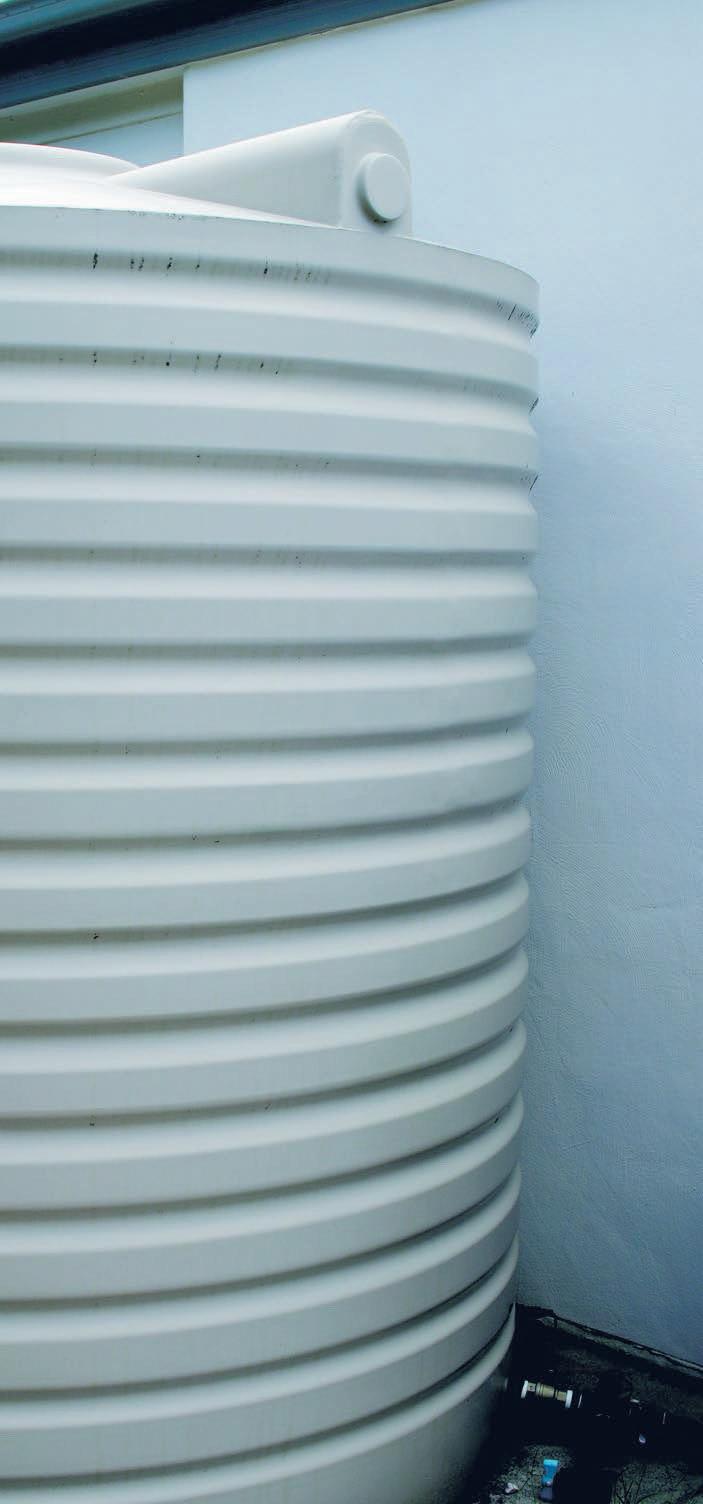

Rebates of up to $2,170* are available for installing a rainwater tank as well as connecting your rainwater tank to internal fixtures like toilets and washing machines. Installing a rainwater tank and harvesting rainwater is a great way of saving money on water bills and it also helps to reduce the demand on our drinking water supply. The rebate program applies to residents connected to the town water supply in the council areas of Ballina, Byron, Lismore and Richmond Valley.
Rebates of up to $2,170*
Rous County Council, the bulk water supplier to our region, offers rainwater tank rebates in partnership with Ballina Shire Council, Byron Shire Council, Lismore City Council and Richmond Valley Council to assist residents to save water.

Purchase and installation – for at least one outdoor use
2,000 litres to 4,499 litre capacity tank
4,500 litres to 8,999 litres capacity tank
9,000 litres and above capacity tank
Additional rebates available to connect tank
Toilets
Washing machine
* Terms and conditions apply. Visit rous.nsw.gov.au
In partnership with
www.echo.net.au May 31, 2023 The Byron Shire Echo 39
SECURING A SUSTAINABLE WATER SUPPLY FOR THE FUTURE OF THE NORTHERN RIVERS
*Terms and conditions apply.
Cape Byron Power
Getting dirty – a panacea for the modern world
 Rebecca Whan
Rebecca Whan
Maybe it’s just me, but when I have my hands in the dirt a sense of presence and calm takes over me. I don’t have green thumbs by any means, or have a job involving the outdoors. I’m an architect with a desk job, and possibly like you I’m trying to make sense of the world around me and have a purpose, whilst also trying to address the deep feeling that ‘something is missing’. That ‘something’ takes many forms, but for me I believe it is that loss of connection to nature, to our intuition, or as it relates to my profession our innate understanding of how to create shelter, structure, refuge. After all the word human comes from the Latin word humus, meaning earth or ground. We knew it all, we had it all, and we lost it. How did we allow this happen and where do we go from here?
The British scientist David Strachan first proposed the controversial ‘hygiene hypothesis’ in 1989, suggesting







Researchers have since refined that theory, suggesting that it is not lack of exposure to disease-causing germs at play, but rather to ‘old friends’ – beneficial microbes in the soil and the environment – and that mental health is also impacted.
Good to get dirty
So getting dirty has been scientifically proven to be very healthy for body and mind. But how does this tie into sustainable design, and how could dirt be the key to helping us in the face of increased climate change pressure, whilst building a sustainable future?
In light of the recent flooding catastrophe in the Northern Rivers and the increasing climate-driven disasters around the globe, it has been easy to feel a sense of powerlessness in regards to the difference we as one person can make, and hesitancy to take ‘sustainable’ steps. After all, isn’t the challenge too great, the seas have warmed too much and the forests have burned too far? Isn’t it too late now to turn back the clock?
When we think of the changes happening all around us, and our place in it, it is certainly

easy to feel a degree of hopelessness and despair. If you look around the globe though, you might realise that this sense of helplessness is a somewhat developed-world problem. What we have lost over the years, and what creates the foundation of developing countries, is connection, community, and shared experience, and along with that comes shared hope. Individual wellbeing, as a side effect, is also greatly increased.
It was made abundantly clear during the aftermath of the recent floods that the key reason we recovered as quickly as we did in the Northern Rivers (and one
of the reasons we continue to live in flood-prone lands) is primarily because of our strong community. However, not simply a Covid hangover, Australia-wide we are experiencing an epidemic of loneliness. We might be less affected than our city friends when living in the regions, however we are still affected. Almost everything is found online these days, and with the advancement of A.I. our reliance (or over-dependance) on technology will surely only increase.
So how does loneliness (or lack of human connection) affect ‘sustainability’, or how can it be harnessed to increase the health and wellbeing of our individuals as well as our communities whilst fortifying us for increased change? This is called social sustainability, and it provides us with the backbone for thriving, and not simply surviving through these times.
Make no mistake - it’s great to install solar panels on your roof and low-flow shower heads in the bathroom – you will tick many ‘sustainability’ boxes for your local council and may also receive some government incentives for ‘going green’. However, what have you learnt to better connect to your neighbour? And who will be reaching out a helping hand when your family gets into a crisis? Activities that not only help the planet but help promote human health and connection to place, whilst connecting to other people, are the most sustainable, and necessary, steps forward as we move into more uncertain times.
Earth building is one such activity or technique, as this is usually a shared activity – and therein lies its joy, as well as its intangible but also invaluable and far-reaching benefits.

As an architect I’ve always thought it curious that the ‘other’ building material, and one that has been built with for well over 5,000 years, is not taught to architecture

students at university. Is it because natural and abundant materials are inherently hard to commercialise? Each patch of soil is unique, its imprints and handprints the work of generations before us. In some ways it knows us more than we know about it. Does this make working or building with the earth difficult and unwieldy? Not at all. It is a delightful material, one that can be worked by young and old, and very rewarding to work with. Getting your hands dirty, and (re) learning to play, experiment, and make mistakes; this all creates huge opportunities for personal growth. However, connecting to others whilst creating something meaningful (and beautiful) is the true reward. Much like the pharmaceutical industry, we have stopped listening to our forebears (and our own intuition) and using local herbs, tinctures and ointments to assist our wellbeing. When building we also have forgotten that once, not so long ago, we were building houses for ourselves without architects, tradespeople and engineers.
Handmade homes
There are many reasons why you should consider building with the earth, and not just because traditionally we did across the globe, and also here in Australia.

Earth building refers to the use of natural, locally-sourced materials such as clay, sand, and straw to construct buildings. This age-old technique not only reduces the carbon footprint associated with the production and transportation of traditional building materials but also offers numerous environmental and energy (as well as community) benefits.

Earth buildings such as adobe (mud brick), rammed earth, or cob structures, are well known for their excellent
thermal properties. The high thermal mass of these materials allows them to absorb heat during the day and release it slowly at night, maintaining a comfortable indoor temperature without the need for excessive heating or cooling. This inherent energy efficiency makes earth buildings a great sustainable choice especially in the Northern Rivers, reducing our reliance on mechanical heating and cooling systems as well as lowering energy consumption whilst electricity prices continue to rise.
It has been proven that ‘you feel better’ and are generally healthier when living in an earthen building because of the way the walls breathe and regulate humidity as well as the ambient temperature. With modern living exposing us to more and more environmental toxins every day, earthen walls offer an opportunity to escape this overload and instead surround ourselves with organic, natural materials in the most important place, our home environment.
Where to from here?

Get outside and get involved in a practical workshop! By connecting to nature and incorporating earth building techniques alongside other sustainable strategies, we can move closer to a future where our built environment is in harmony with the planet, promoting resilience, energy efficiency, and a healthier future for generations to come.
Most importantly, it provides us with a chance to reconnect to place, and to others. A way to experience true joy and be present in the moment.
As a recent workshop participant observed “I feel like you have shared with me some sacred knowledge…”
What we have forgotten, is this knowledge is all within us. It’s time to relearn what we have lost, and in doing that create a sustainable future for ourselves and our children.

40 The Byron Shire Echo May 31, 2023 www.echo.net.au
Rebecca sharing earth construction techniques with indigenous communities in Ibicoara, Brazil.
Photo Miroca Resende
20
Community earth building day, Murwillumbah. Earthbag technique is used here, a robust and simple earth construction techinque. Photo Rebecca Whan
Australia's Largest Selection of Eco-Friendly Paints and Finishes




Discover the beauty of sustainable living at Painted Earth, your trusted source for eco-friendly and non-toxic paints, renders, and wood finishes. We are thrilled to announce our new location and invite you to explore our online store, making it even easier to access our extensive range of environmentally conscious products.
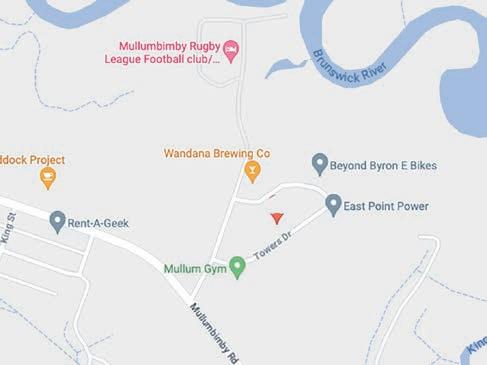
We believe that creating a beautiful space shouldn't come at the expense of our planet or your well-being. That's why all our products are carefully selected to make a positive impact on the environment and your health.
Whether you're a DIY enthusiast or a professional builder, our modern and stylish finishes are suitable for any project. From vibrant interior and exterior paints to natural wood stains and varnishes, we offer a comprehensive range of options to bring your vision to life.

We're proud to be part of the journey towards a healthier and more sustainable future.

www.echo.net.au May 31, 2023 The Byron Shire Echo 41 PAINTED EARTH Sustainable
& Finishes
Paints
INTERIOR PRODUCTSEXTERIOR PRODUCTSAPPLICATION TOOLS paintedearthbyronbay paintedearthbyronbay Visit our new location at Unit 1 9/11 Towers Dr, Mullumbimby, NSW 2482 or browse online at www.painted-earth.com.au WE ARE HERE
The clothes on our backs
Adel Pheloung
Fast fashion – the widescale production of cheap clothes to keep up with trends – clearly has Australians locked in its grip. Wanting to wear relevant and stylish clothes that are still affordable is possible when buying from the fast fashion industry. Mass retailers such as Kmart, Big W and Target offer everyday Aussies the opportunity to buy clothing, homewares and other lifestyle basics at extremely low prices; it’s the boasting point of each brand. Yet with textile production and manufacturing having huge social and environmental impacts, such as contributing to pollution, being extremely resource heavy, using toxic materials, and hosting atrocious working conditions in developing countries, these ‘cheap’ clothes come at a cost.
Australians buy roughly 56 new clothing items per year, according to the Australian Fashion Council’s 2018–19 report. That makes Australia the second-highest consumer of textiles per person, second only to the USA. Further, most of these clothes end up as trash. Former Assistant Minister for Waste Reduction and Environmental Management, Trevor Evans, estimated that ‘Australians discard close to 800,000 tonnes of clothing and textiles each year, a rate of 15 tonnes every 10 minutes.’
That’s a lot of waste. The simplest way for individuals to reduce their clothing contributions to landfill is by adopting the mindset that clothes are not meant to be thrown in the garbage. Unless they are so riddled with holes that not a scrap can be spared, there are so many alternatives to just tossing clothes by the wayside. If clothes are still in good condition, they can be sold second hand, using online marketplaces or garage sales. Alternatively, charities around the world are always accepting donations, whether that’s via the local op-shop drop off bin, or at a homeless shelter. Particularly, clothes that are well worn, but usable, can still be of use to those in need. And when clothes get too holey to donate? They can be cut into rags for cleaning and patches for mending. Unless clothes are completely soiled and tattered, there is almost always an alternative to them ending up in landfill.
‘30 wears’ rule
Another way to prevent textile waste is by reducing the sheer volume of consumption that occurs when people go shopping. According to the UN, $500 billion USD is lost every year due to the underutilisation of clothing. A simple way to prevent the purchase of unnecessary clothing, and thus save resources and wallets, is to remember the ‘30 wears’ rule; if the clothing item
GREEN e BUILDING
Natural Building & Design
Green e Building offers natural building and design services with ecological, regenerative, sustainable and off-the-grid options for anyone surrounding the Byron Bay Area of NSW Australia.

We believe there is nothing more sustainable than using natural and recycled materials. Green e Building can design and build your new dream home, sustainably renovate your current home or work with you to add extra rooms and extensions.
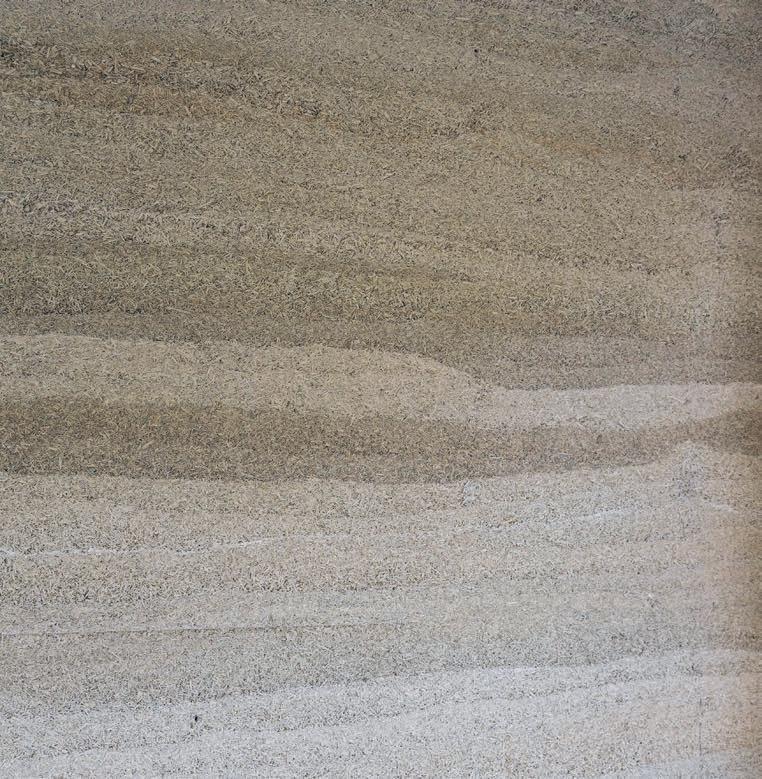
Green e Building
Adrian Medcraft 0409 519 116 www.green-e-building.com
gday@green-e-building.com


won’t be worn more than 30 times, or won’t last that many uses, then it isn’t worth the money or the Earth’s materials. By following this rule, there is then more money to spend on the clothes that will get 30 or more uses, and it becomes a little easier to afford the slightly more expensive items that enable the manufacturers to be paid a liveable wage.
Greenwashing
When there is an absolute need for new clothes that can’t be sourced second hand, one should look for brands that have transparency throughout the entire manufacturing process (from where and how the materials are sourced to the working conditions in factories to the packaging used to transport goods). Businesses that sell clothes will almost always have some sort of an impact on the environment, and brands that are honest about this and give customers the opportunity to trace the practices used, are more likely to be genuinely attempting sustainability. Otherwise, there is the risk of falling for greenwashing; when businesses paint their product as eco-friendly so

that they can increase their market audience, stay socially relevant, and have an excuse to increase prices, without having to make any notable sustainability efforts.
So, the best way to have a sustainable wardrobe? Wear what you already have, thrift what you don’t, find
alternatives to discarding clothes in the trash, and research the genuinely eco-friendly brands that will provide you with clothes that last for more than 30 uses. The clothes on our backs are one of the many places where we can start to, relatively easily, incorporate sustainable lifestyle changes.

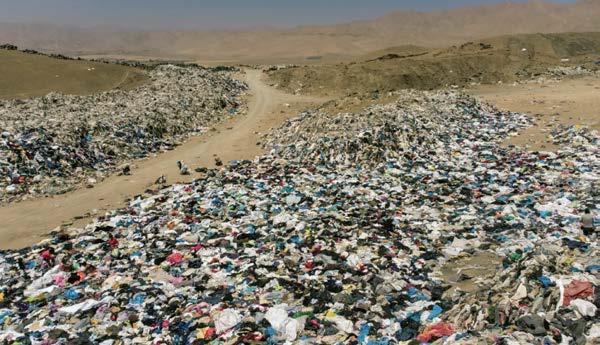
42 The Byron Shire Echo May 31, 2023 www.echo.net.au
•
and
•
• Obtaining council approval • All facets of natural building and construction • Locally
Austalian Hardwoods
Design
drafting
Acquiring engineers drawings
sourced
fundies.com.au 140 Keen Street, Lismore | Open 7 days quality vitamins & supplements free naturopathic advice certified organic fruit & veg gluten free & plant based foods bulk wholefoods pantry essentials organic skincare check out our store!
Top: Female garment workers in Bangladesh. Photo www.ilo.org
22
Bottom: Used clothes discarded in the Atacama Desert, in Alto Hospicio, Iquique, Chile. Photo Martin Bernetti/AFP
‘Australia the secondhighest consumer of textiles per person, second only to the USA’
Hints for living a sustainable life

Home battery technology charging ahead
David Lowe
In the fairly recent past, if you were going off-grid, there weren’t many options for batteries. There was only lead acid, a technology that hadn’t changed much since its invention in 1859 (apart from sealed gel variants), and still used in most car starter batteries. Lead acid batteries were big, heavy, had to be managed carefully, and didn’t last all that long.
Now it seems like there’s a new battery technology announced every month. Unfortunately, many of these aren’t yet available for sale, at least in Australia, and new pitfalls are emerging along with the new technology, including fire risk, unsustainable mining, labour exploitation and recycling issues. Overall though, the future is looking very bright for batteries of all sizes, with unprecedented levels of investment and consumer demand.
A lot of this is being driven by batteries for portable devices and electric cars, with larger fixed batteries tending to remain in the shadows, but benefiting from improvements in other sectors of the industry. Elon Musk’s company Tesla has been responsible for a lot of the hype around fixed batteries, but there are many other significant players, including companies based in Australia.
Right now, fixed batteries account for only about ten per cent of the global battery market, but this is rising as more renewable installations come
online, and more people appreciate the freedom and cost -savings of being off-grid.
If you’re looking at upgrading an older off-grid solar power system, and your batteries are cactus, you might be able to upgrade the batteries independently if the solar panels are still okay. Depending on your system though, you will possibly have to replace other components at the same time.
Which battery is best?
Lithium-ion is still the main battery type globally, appearing in devices of all sizes, but requiring toxic, problematic materials such as cobalt, nickel and manganese, along with lithium, which is comparatively abundant. Much research is currently focused on improving anodes and cathodes, as well as other battery ingredients, including nano-materials.
Battery variants such as lithiumsulphur use cheaper, more commonplace materials, with Monash University researchers recently claiming the addition of ordinary sugar solves issues of degradation with these cells.
Already available for sale in Australia are lithium iron phosphate and lithium titanate batteries which promise many more recharges, a better environmental footprint and a lower fire risk than lithium-ion, without additional cost.
Sodium-ion batteries don’t need lithium at all, but use abundant salt as the main chemical ingredient.
Formerly available in Australia, an improved version of this tech has now surfaced in China.
Vanadium batteries may be the future for industrial facilities, but are much too big for home installations. At the opposite end (very small devices),
Discover the future of sustainable, disaster-resistant living with Domeshells!
Designed to be cyclone, earthquake, bush fire resistant, termite proof.
Ready to build your dream dome home?
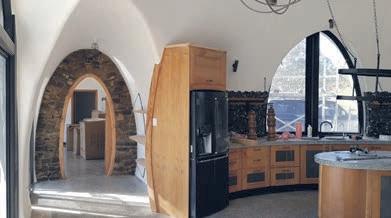
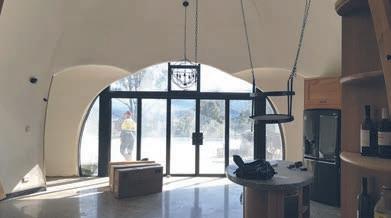
Domeshells offers the ultimate solution with our unique dome-shaped concrete shell structures. Explore the infinite design possibilities and benefits of our basalt fibre reinforced concrete shells. We provide design services all the way to council permits.

Ready to embark as owner builder or DIY?
Learn how to build your own back yard dome cabin, office sleepout or shelter. Our e-manuals, hands-on, and online dome building courses will give you the knowledge and skills you need to succeed.
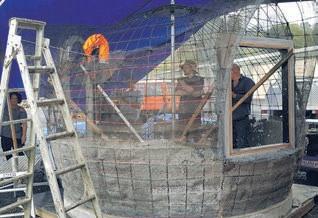
Visit domeshells.com.au

or call 02 6677 0216 dome shells
there’s a lot of excitement around energy intense graphene batteries. Graphene is a human-made carbonbased product which has many exciting science fiction properties, but a graphene battery is yet to be sighted outside the lab, let alone powering anything big.
When a battery is not a battery
If you’re an early adopter in Australia, you can now get on the waiting list to buy a home hydrogen ‘battery’ which only requires water and solar energy as inputs, plus some very clever tech. In Scotland, a company called Gravitricity is experimenting with gravity-based energy storage devices. The troubled Snowy 2.0 scheme is basically the same idea, but using large amounts of water. Other
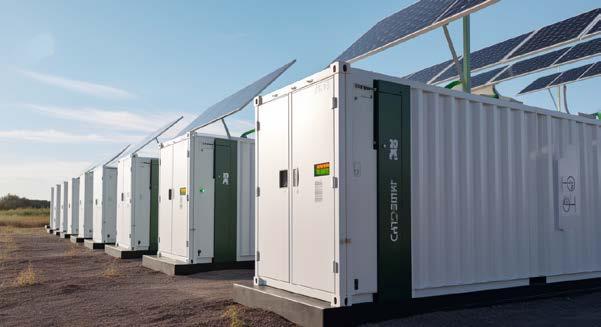

people are using weights on steep railway lines, with excess solar energy pushing the weight uphill during the day, and gravity generating energy at night. The beauty of Gravitricity is it can run in abandoned mining shafts, or elevators, or anywhere there’s a decent drop.
The holy grail of batteries is solid state technology, which won’t require any messy chemistry, won’t wear out, will release and regain energy faster than wet batteries, and pack much more energy into a smaller space.
Volkswagen has done a deal with one solid state battery company which claims it will be ready to put its product into cars in 2025. If this milestone is reached, a version for houses will inevitably follow. This could have similar implications for energy to the solid state revolution in data storage.
www.echo.net.au May 31, 2023 The Byron Shire Echo 43
Create your own sustainable eco-system with our online organic seedlings and seeds. Join the movement towards a greener future. PLASTIC AND CHEMICAL FREE SINCE 2012 wormticklers.com THE FARM, 11 Ewingsdale Road, Ewingsdale NSW
23
Seriously big batteries. Cloudcatcher Media with Midjourney AI

44 The Byron Shire Echo May 31, 2023 www.echo.net.au
Time is of the essence...
The time to speak up, act up and protest is now. We are in a climate crisis!






























































































 Jo Immig
Jo Immig














































 Aletha Zylstra
Aletha Zylstra








 Rebecca Whan
Rebecca Whan


































